However, the abovementioned article left a lot of questions concerning Venus.
What happened to Venus after it interacted with Mars? How long did it take for Venus to acquire its current circular, planetary orbit? Did cometary Venus have other interactions with planet Earth? How many passes did Venus make before it acquired a stable orbit? What were the dates of those passes? What were their effects?
Ca. 12,500 BP cometary Venus was inside the solar system and knocked Mars towards Earth. Nowadays Venus is not a comet; it is a planet with a stable circular orbit.
Venus being a planet is attested as far back as Mesopotamia (ca. 4,500 BP), which likely means that the transformation of Venus from comet to a planet occurred between 12,500 BP and 4,500 BP.
This transformation involved an orbital change, a transition from a long-duration highly elliptical orbit to a short-duration circular orbit. It is the progressive capture of a comet by the Sun that transformed it into a stable planet, a process which probably involved several passes, with a shorter and shorter time gap between 12,500 and 4,500 BP.
In order to determine when this progressive capture of Venus occurred, we must first identify the Venus markers, i.e. what kind of earthly parameters would have been modified by a fly-by of cometary Venus?
Venus Markers
There is no known Venusian meteorite found on Earth, which suggests a limited transfer of solid material, if any. This is due to the fact that escape velocity on Venus is high (10.4 km/s VS 6.5 km/s on Mars) and elevated drag in the dense Venusian atmosphere would prevent anything reaching escape velocity and leaving the planet.
Discarding rocks, we will focus on more volatile materials like the gases in Venus' atmosphere and tail that exist in higher concentrations than they do on Earth.
Thus, a close encounter with Venus might be identified by a sharp rise in terrestrial samples (pit cores, ice cores...) of those Venus-abundant gases.
The graph below shows the concentration of gases in Venus and Earth's atmospheres:
As you can see, two gases stand out as notably more concentrated on Venus than on Earth. These are carbon dioxide (CO2 - as indicated by the red bars) and sulfur dioxide (SO2 - as indicated by the green bars). Notice that the scale is logarithmic, therefore a one gradation increase in the chart corresponds to a tenfold increase in terms of gas concentration.
CO2 constitutes 96.5% of Venus' atmosphere and only about 400 ppm (0.04%) of Earth's atmosphere, which is a 2,500-fold difference. As far as sulfur dioxide is concerned, Venus' atmosphere contains 186 ppm while Earth's atmosphere only contains about 10 ppb (part per billion), which is a 20,000-fold difference.
Beside those "common" gases, there is also deuterium. Its abundance on Earth is about 100 ppm (0.01%), while its abundance on Venus is about 100 times higher.
In addition to those three gases, there are hydrocarbon compounds (including one of its simplest forms - methane). Velikovsky hypothesized the presence of hydrocarbons in Venus' atmosphere as early as the 1960s, as detailed in the second chapter of Worlds in Collision - titled 'Naphtha'.
The idea that comets in general, and Venus in particular, contain hydrocarbons was ridiculed at the time by Carl Sagan et al. Three decades later, direct observations of Venus' high atmosphere proved Velikovsky right:
"Donahue and his collaborators... characterize the finding [of methane in Venus] as so surprising that they were loathe to publish them..."Despite Velikovsky being proven correct, the mainstream scientific dogma that "there is no methane in Venus' atmosphere" and "therefore Velikovsky is wrong and uniformitarianism prevails," scientists had to invoke an unsubstantiated and extremely unlikely cause to explain the methane in Venus' atmosphere. As Charles Ginenthal put it:
The researchers base their unlikely conclusion [that the methane is of volcanic origin] on the abundance and composition of methane detected by a mass spectrometer aboard the Pioneer-Venus Probe. Scientists had known for years that the spectrometer had recorded a sharp rise in methane, beginning at about 14 kilometers above the surface of Venus, during the probe's descent.
But for nearly a decade, Donahue and his co-workers believed the surge merely reflected methane placed in the spectrometer on Earth in order to calibrate the instrument, not activity on Venus...
"We concluded that the methane sampled was a primeval methane freshly vented from the planet's interior," says Donahue... he estimates that a volcanic eruption spewing out the amount of methane found by the Pioneer-Venus would occur only about once every 100 million years.
Moreover, it appears that the probe passed through the [methane] plume near the top of the atmosphere, where winds would have stretched the vented methane over a wide area, as well as closer to the surface of the planet...
"It is embarrassing to invoke such a wildly unlikely event as a chance encounter between the entry probe and a rare and geographically confined methane plume, but so far we have eliminated all other plausible explanations," Donahue added.
- Science News, (September 12, 1992), page 172
"To explain the large amount of methane found in the Venus atmosphere the scientist said that the methane had to have come from an extremely rare volcanic eruption.The presence of hydrocarbons around Venus was suggested by Velikovsky because its 2 million mile-long tail does contain carbon, as detected in the late 1970s by the SOHO probe, and hydrogen ions, the two constituents of hydrocarbon. For example, methane, one of the simplest forms of hydrocarbon, is made of one atom of carbon and four atoms of hydrogen, hence its formula: CH4.
The one explanation omitted by Donahue is that Venus has a good deal of methane in its atmosphere, just as Velikovsky predicted. Scientists would rather suggest a wildly improbable concept to explain the methane found than give consideration to Velikovsky's prediction.
While scientists like Sagan will call Velikovsky's theory extremely improbable, they will propose that it is probable that Pioneer-Venus just happened to come down on Venus to experience a unique event that happens once every hundred million years."
- Charles Ginenthal, Carl Sagan and Immanuel Velikovsky
Up to now we have identified four gases (SO2, CO2, D, CH4) that are substantially more abundant in Venus' atmosphere than in Earth's atmosphere. A close encounter between the two celestial bodies should have left concentration spikes for those gases in earthly records.
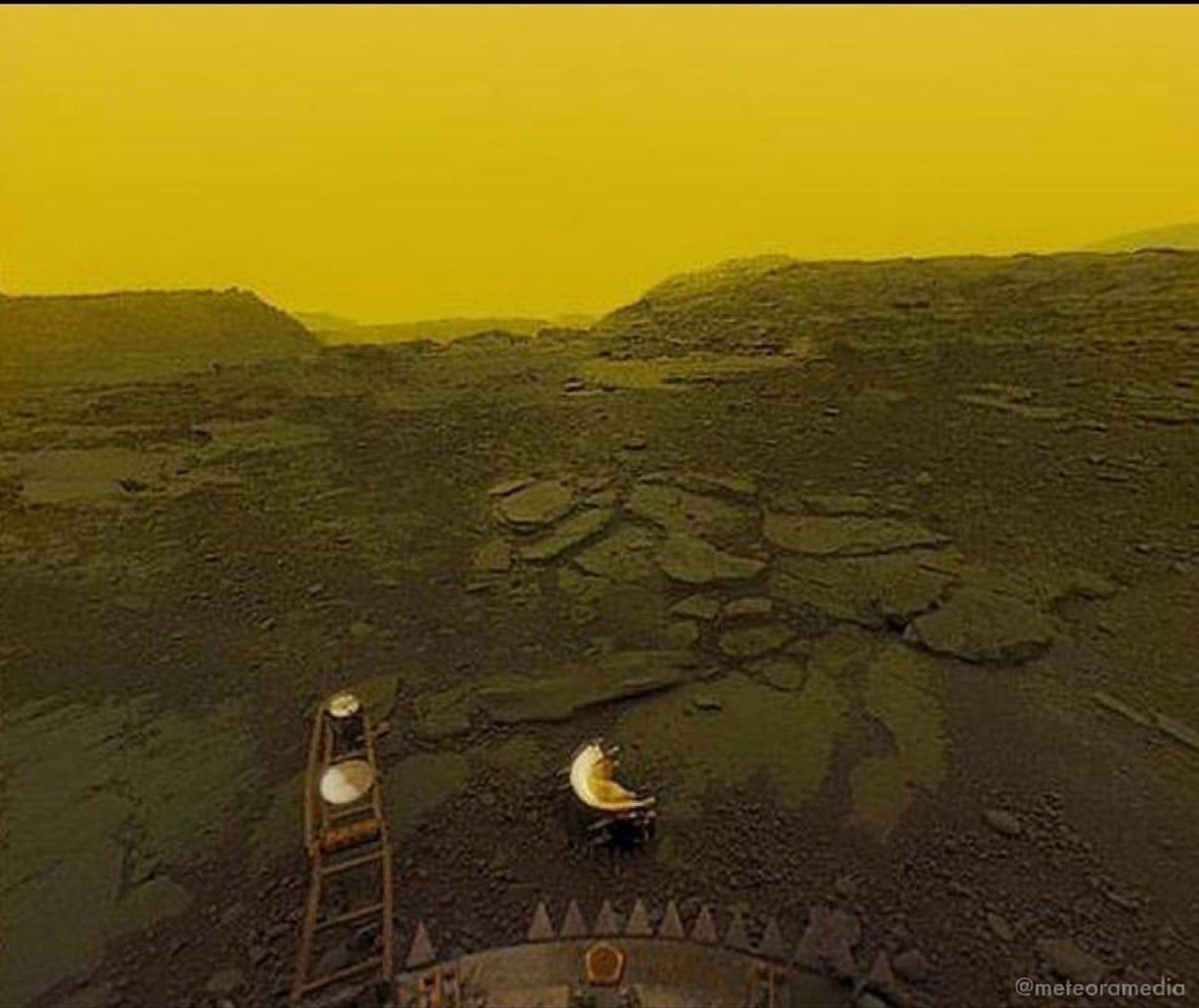
This increase in atmospheric dust typically induces larger cloud cover (dust acts as a nucleation agent for cloud formation). In turn, the increased cloud cover leads to increased rainfall and a temperature drop.
In total then, we have identified seven potential markers of a Venus encounter:
- Sulfur dioxide (SO2)
- Carbon dioxide (CO2)
- Deuterium (D)
- Methane (CH4)
- Increased dust
- Increased precipitation
- Temperature drops
The diagram below recapitulates the hypothesized effects of nearby passes of comet Venus. The seven Venusian markers are shown in dark blue boxes:
Looking for a Date
Now we are going to look at graphs of earthly records between 12,500 and 4,500 BP and see if there is any date when the seven markers described above spike concomitantly.
Notice that we're not looking at every single pass of Venus yet, because most data don't provide a high enough resolution. Indeed, ice core analysis and the like usually come with a centennial or millennial scale, while Venus, especially during its last passes, must have exhibited an (almost circular) orbital period that is measured in decades.
For reference, according to Velikovsky, the orbital period of cometary Venus was 52 years, the typical period of a solar system comet (Jupiter-family comets) is less than twenty years, and the current orbital period of planetary Venus is only 255 days.
So, we are looking for a span of a few centuries within which the hypothesized passes of Venus might have occurred.
Methane Spike and Temperature Drop
First, we are going to examine two indicators taken together: a methane spike in conjunction with a temperature drop, because methane is a strong greenhouse gas (methane has a global warming potential 28 times that of carbon dioxide), so a methane spike should induce a warming not a cooling. Is there any date between 12,500 and 4,500 BP in which this unlikely conjunction occurred?
The charts below show temperature and methane records over the past 12,000 years. The part on the right with a pink background represents the 4,500 to 12,000 BP time-span.
Over the past 12,000 years, the largest temperature drop recorded in the Kilimandjaro Northern ice field (5 degrees drop, as indicated by the red arrow) and in Israel Soreq Cave (2 degrees drop, as indicated by the yellow arrow) both occurred at the same time: 5,200 years BP (3,200 BC)
At the same date, one of the largest methane spikes over the past 12,000 years was recorded in the GRIP Greenland ice core, as indicated by the pink arrow, with an increase from 600 to 650 ppbv (part per billion per volume). Notice that the methane rise seems to last for a few centuries, which might suggest one lasting event or a series of events shortly interspersed.
Now, Kenya (Kilimandjaro) and Israel (Soreq Cave) are just two locations near the tropics. Was the 5,200 BP temperature drop a local glitch or a global event?
The Greenland ice core (GISP2) also reveals a temperature drop ca. 5,200 BP (see purple arrow in the graph below):
Not only does the GISP2 ice core reveal a temperature drop ca. 5,200 BP, but also a sustained and severe decrease in recorded temperatures (see green arrow) over the following centuries (ca. 5,200 - 4,600 BP).
The 5,200 BP marked cooling is confirmed by dendrochronology (study of tree rings) conducted in Ireland:
In the diagram above the 3,200 BC (5,200 BP) date is highlighted in red. The narrowness index (the narrower the ring, the higher the index) is indicated by the red arrows.
According to dendrochronologist Mike Baillie, the 5,200 BP cooling event was one of the three most severe coolings our planet experienced over the past 7,000 years:
"We ranked a very crude narrowness index, the product rs computed for a 10-yr window. We found that the three highest values in the prehistoric period [were] at 1153 BC, 3199 BC and 4377 BC."Notice also that the cooling recorded ca. 5,200 BP seems to be followed by several centuries of colder-than-usual temperatures, as indicated by the green rectangle showing relatively high narrowness indexes until ca. 4,600 BP (2,600 BC).
- Mike Baillie, 'Irish tree rings, Santorini and volcanic dust veils', Nature, 1988
The above records coming from Kenya, Israel, Greenland and Ireland suggests that the 5,200 BP event started a lasting cooling episode that affected the whole planet. This period is known as the Piora Oscillation:
The Piora Oscillation was an abrupt cold and wet period in the climate history of the Holocene Epoch; it is generally dated to the period of c. 3200 to 2900 BCE. Some researchers associate the Piora Oscillation with the end of the Atlantic climate regime, and the start of the Sub-Boreal, in the Blytt-Sernander sequence of Holocene climates.The Piora Oscillation got its name from the Piora valley in Switzerland where the 5,200 BP cooling event was first detected:
The phenomenon is named after the Val Piora or Piora Valley in Switzerland, where it was first detected; some of the most dramatic evidence of the Piora Oscillation comes from the region of the Alps. Glaciers advanced in the Alps, apparently for the first time since the Holocene climatic optimum; the Alpine tree line dropped by 100 meters.So far we have found one date, 5,200 BP, that shows the unusual conjunction between a methane spike and marked global temperature drops. Let's focus now on the five other Venusian markers and see if they display any spike ca. 5,200 BP.
Deuterium
Deuterium is an isotope of hydrogen - also known as heavy hydrogen. As shown in the picture below, its nucleus constitutes one proton and one neutron, and its symbol is 2H or D:
Deuterium is one of the most thoroughly measured chemicals of Venus because deuterium is related to the presence of water which is considered as one of the necessary components for life to develop. So, the study of deuterium on Venus might help answer questions about life on Venus. In any case, deuterium is far more abundant in Venus' atmosphere than on Earth:
"Absorption lines of HDO and H2O have been detected in a 0.23-wave number resolution spectrum of the dark side of Venus in the interval 2.34 to 2.43 micrometers, where the atmosphere is sounded in the altitude range from 32 to 42 kilometers (8 to 3 bars). The resulting value of the deuterium-to-hydrogen ratio (D/H) is 120 ± 40 times the telluric ratio, providing unequivocal confirmation of in situ Pioneer Venus mass spectrometer measurements that were in apparent conflict with an upper limit set from International Ultraviolet Explorer spectra. The 100-fold enrichment of the D/H ratio on Venus compared to Earth is thus a fundamental constraint on models for its atmospheric evolution."In her 1997 paper, Donahue found even higher ratios of deuterium to normal hydrogen on Venus compared to Earth: 150 ± 30 or 157 ± 30 or 138 times.
- De Bergh et al., 'Deuterium on Venus: observations from Earth', Science 1991
Not only was a high concentration of deuterium found in Venus' high atmosphere, but this deuterium is pushed by solar winds outside the Venusian atmosphere towards Venus' surrounding space and ion tail:
"[...] the motional electric field of the solar wind impressed across the draped magnetic field lines of the ionotail of Venus eventually overtakes the polarization electric field and accelerates the ions up to solar wind speeds as the ionotail merges into the interplanetary medium. Essentially all escape of H* and D* by the electric field process occurs in the light ion bulge, where most of these ions reside."This leakage of deuterium from Venus' high atmosphere to its surrounding space and ion tail make a gas transfer from Venus to Earth more likely if the two bodies are close enough.
- Dubinin et al., 2017, The Effect of Solar Wind Variations on the Escape of Oxygen Ions From Mars Through Different Channels: MAVEN Observations
In my article titled Did Earth 'Steal' Martian Water, we emphasized that even today, with Venus being a stable planet, it retains a very long ion tail. Venus' tail is 45 million km (29 million miles) long - so long in fact that its ion tail reaches Earth when the Sun, Venus and Earth are aligned.
It's probable that when Venus was a comet, its ion tail was much larger, hundreds of millions of km long, making the transfer of ions (including deuterium ions) from its tail to Earth possible, even if the two bodies were at a considerable distance from each other.
Now let's look at deuterium records on Earth. Since deuterium concentration fluctuates a lot, we'll focus on the deuterium excess that helps identify spikes more easily:
The above chart shows the deuterium excess found in a Greenland ice core (GRIP). We can see that in 5,200 BP (red vertical line) one of the three largest deuterium spikes of the past 10,000 years occurred, reaching 10.4 excess deuterium, as shown by the blue horizontal line.
Sulfur Dioxide (SO2)
As mentioned above, as far as sulfur dioxide is concerned, Venus' atmosphere contains 186 ppm of SO2 while Earth's atmosphere only contains about 10 ppb - a 20,000-fold difference.
For comparison, the 1883 Krakatoa eruption, one of the largest eruptions in modern history, generated a 40 ppm spike in the GISP2 Greenland ice core. In the diagram above, the blue arrow shows a 250 ppm sulfur dioxide spike ca. 5,200 BP (3,200 BC). This is the fifth-strongest sulfur signal recorded over the past 6,000 years.
As we've discussed in previous articles, SO2 spikes are tentatively associated with volcanic eruptions. Interestingly, the 5,200 BP signal is the largest unidentified spike in the last five millennia, as shown by the green arrow in the diagram below:
Carbon Dioxide (CO2)
CO2 is by far the most prevalent gas in Venus' atmosphere (96.5%) while it is only a trace gas in Earth's atmosphere (400 ppm). If there were passes of cometary Venus near Earth ca. 5,200 BP, one could expect a gaseous transfer and a subsequent CO2 spike in Earth records - which is indeed what CO2 concentration measured in the EPICA (Antarctica) ice core suggests:
Notice that, as with the temperature cooling and the methane spike, the increase in atmospheric CO2 lasted several centuries. As depicted by the red arrow in the diagram above, CO2 concentration rose markedly from ca. 5,200 BP. This rise lasted about six centuries until ca. 4,600 BP, as shown by the green box.
Increased Wetness
Increased wetness is one the effects of cometary events, whether from direct impacts and/or overhead explosions and/or tail crossing. These three features increase atmospheric dust, which in turn acts as a nucleation agent, increasing cloudiness and inducing precipitation. The diagram below illustrates these interactions:
The diagram below shows rainfall over the past 10,000 years in the Indus valley. As shown by the red arrow, the 5,200 BP time-mark reveals a sharp increase in rainfall from 450 mm to about 800 mm a year, roughly an 80% increase. In addition this increase in rainfall lasted for several centuries after 5,200 BP, as shown by the green box below
Was the increased wetness ca. 5,200 BP limited to the Indus Valley or was it more like a global event?
Thousands of kilometers away from the Indus valley, increased wetness at this time is confirmed by research conducted around the Dead Sea. In Mount Seldom, 300 feet (100 m) above sea level, lie salt caves. Twigs and leaves from an oak tree (Quercus Calliprinus) were found in one of them, preserved over millennia. How do we explain the oddity of oak fragments in a sterile salt cave 300 feet above sea level?
Now it is geologically certain that it was an ancient pluvial age that created caves in the salt; in fact past climate can be inferred by carefully measuring the width of caves formed by salt dissolution. The cave widths can in turn be compared with correlative glacial advances in northern Europe (bigger caves = more rain = more glaciers) and the cave elevations with ancient sea levels of the Dead Sea itself.The diagram below illustrates the increased wetness in the Dead Sea region experienced ca. 5,200 BP (as shown by the red vertical line). Notice that the wet episode around the Dead Sea lasted several centuries, as indicated by the green box, the end of which occurred between 4,900 and 4,400 BP. Indeed during those 5 centuries the sea level reconstruction is uncertain, as shown by the question marks and the dashed level curve:
The horizon of wide caves found some 300 feet above the present sea level necessarily indicates an extremely wet period in the early Bronze Age, or about 4200 to 5200 radiocarbon years before present.
Oak twigs, driftwood, and marl found in the caves must have been transported by floodwater from some other part of the Judiah Hills. when the water level was some 300 feet higher than present, implying heavy flooding on the Jordan River and coupled probably with lower evaporation rates due to cooler weather.
- Ignatius Donnelly and the End of the World
We find a similar phenomenon on the American continent where the Lago Grande (the main part of Lake Titicaca, along the border of Bolivia and Peru) started to rise ca. 5,200 BP, it lasted for centuries until the lake was about 100 meters (300 feet) higher, which is the same figure we encountered for the Dead Sea rise.
The water rise in Asia (Indus Valley), Middle East (Dead Sea) and Americas (Lake Titicaca) strongly suggests that our planet experienced a marked wetness episode starting ca. 5,200 BP and lasting for several centuries.
Notice however that while numerous areas experienced some increased wettness between 5,200 and 4,600 BP, some other areas experienced an aridification, as was the case for Spain for example:
Palynological data from areas within the thermo- and mesomediterranean areas reported woodland cover reductions after ca. 5200 cal yr BP (Jalut et al., 2000; Carrión et al., 2001, 2004; Carrión, 2002; Pantaléon-Cano et al., 2003; Fletcher et al., 2007) (Fig. 8).On the other side of the Mediterranean Sea, in North Africa, a similar aridification took place:
During this period, an increase in fire activity, probably enhanced by arid climate conditions, may have played a crucial role in favoring the spread of sclerophyte and fire-prone communities (Carrión and van Geel, 1999; Carrión et al., 2003; Gil-Romera et al., 2010a), even at high elevations (Carrión et al., 2007; Anderson et al., 2011; Jiménez-Moreno and Anderson, 2012; Jiménez-Moreno et al., 2013).
In addition, marked changes in several lake sequences took place approximately at 5100 cal yr BP. (Carrión et al., 2003; Anderson et al., 2011; García-Alix et al., 2012) . In Villarquemado, deposition in ephemeral lake conditions continued without major changes in the geochemical signature (SUB-2A), except for a significant increase in Mn that might reflect higher occurrence of oxidation processes in a shallow environment.
Other pollen-independent studies reach similar conclusions: at Laguna de Medina, Reed et al. (2001) suggest a clear decrease in lake levels after 5530 cal yr BP, while at Siles phases of dramatic lake dessication around 5200 and 4100 cal yr BP are identified (Carrión, 2002).
- Nick Brooks, Beyond collapse: climate change and causality during the Middle Holocene Climatic Transition, 6400-5000 BP
Arid interval 5010-4860 (+/- 150) at Tigalmamine in montane Morocco. Corresponding decline in oaks (Quercus rotundifolia and canariensis) in favor of Gramineae suggests reduced winter precipitation corresponding to cooler sea temperatures in North Atlantic.The above suggests that our planet experienced a dramatic and centuries-long wet period starting ca. 5,200 BP, except South West Europe and North Africa which experienced aridification.
- Lamb, H. F. et al, Nature, 373 p 134 (1995).
Increased Atmospheric Dust
The hypothesized crossing of cometary Venus' tail, the induced earthquakes and volcanic eruptions, direct impact of cometary fragments and overhead cometary explosions are all potential causes for an increase in atmospheric dust.
Dust analysis conducted in Terra Del Fuego (Argentina) reveals a moderate dust spike ca. 5,200 BP (see purple arrow in the diagram below) This increase in dust concentration lasted a few centuries up until ca. 4,600 BP (see green rectangle).
Note also that 5,200 BP marks the beginning of a period of glacier advance that lasted until ca. 4,600 BP (see blue triangle), confirming the cooling described above.
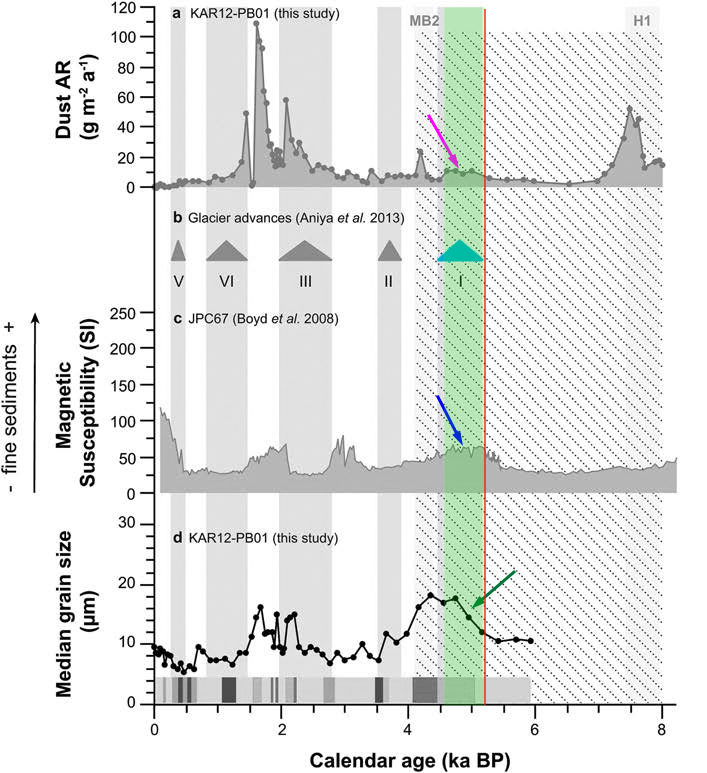
Tierra Del Fuego is not the only place that witnessed an increase in atmospheric dust. In Huascaran (Peru), ice cores reveal a similar pattern, with a marked dust spike. A two-fold increase in dust concentration from 15,000 to 30,000 ca. 5,200 BP that lasted until ca. 4,600 BP.
Thousands of kilometers from Peru and Argentina, the African continent experienced dust spikes too. As shown in the diagram below, both the Kilimandjaro ice core and the Gulf of Oman eolian deposition reveal a dust spike starting ca. 5,200 BP (red vertical line) and lasting until ca. 4,600 BP (green box).
Notice that in the diagram above, the dust spike in the Gulf of Oman was the second largest over the past 11,000 years.
Similar to the methane, temperature, CO2 and wetness data, dust records reveal a disruption that started ca. 5,200 BP and lasted until about 4,600 BP.
In summary, so far, we have identified seven potential Venusian markers, namely temperature drop, methane, deuterium, sulfur dioxide, carbon dioxide, wetness and atmospheric dust. We have discovered that there's only one time period between 12,600 BP and 4,500 BP that ticks each of those seven markers. This date is 5,200 BP.
Impact On Human Populations
The neolithic age ended around 5,000 BP and was superseded by the Bronze Age. Thus the period we are studying (5,200 - 4,600 BP) corresponds to the late Neolithic and early Bronze Age.
Despite the relative scarcity of archeological data for these remote times, we can see that the Earth changes described above had consequences on the human population. Several cultures and settlements collapsed between 5,200 and 4,600 BP.
In Mesopotamia, the collapse of the Uruk culture after flourishing for 6 centuries has been pinpointed to around 5,200 BP, as Uruk "colonies" in the North were abandoned. Some smaller settlements in southern Mesopotamia were abandoned too. According to Peter Martini and Ward Chesworth, the collapse of the Uruk culture was due to rapid cooling.
Another example from Mesopotamia is Jemdet Nasr, a settlement mound in Iraq encompassing 5 hectares (14 acres). After two centuries of development, a fast collapse occurred at 4,900 BP. Irrigation cultures continued in the region, but new strong dynasties thrived again in Mesopotamia only after 4,600 BP, after an increase of temperatures and higher precipitation.
In the Nile valley after centuries of an increase in population agglomeration and a parallel increase in social complexity, 5,200 BP marked the collapse of Northern Egypt, which was subjugated by Southern Egypt.
Like in Mesopotamia, the collapse of Northern Egypt is explained by "climatic deterioration":
This occurred against a background of population agglomeration in the Nile Valley at a time of increasing climatic and environmental deterioration and uncertainty, which may have played an important role in driving competition over resources.According to Vernet et al. (2000), the Sahara region experienced a similar collapse with a sudden and marked reduction in the number of occupation sites north of 23°N over the 5200-5000 BP period. The chart below shows this decrease in human population ca. 5,000 BP (red vertical line) North of 23° latitude (blue columns). The human population decreased by about 50% after more than two millennia of relative stability.
Nick Brooks, Beyond collapse: climate change and causality during the Middle Holocene Climatic Transition, 6400-5000 years before present, 2013
Notice that south of 23° latitude, the population decreased too (purple dashed line) but in a less pronounced way. This depopulation happened after one millenium of sustained demographic growth.
The Knap of Howar on the island of Papa Westray in Orkney, Scotland is a Neolithic settlement which may be the oldest stone building in northern Europe. Radiocarbon dating shows that it was deserted ca. 4,800 BP after 9 centuries of occupation.
Cucuteni-Trypillia culture is a Eastern European culture that emerged ca. 5,800 BP and flourished for eight centuries. It encompassed hundreds of km2, about 3,000 structures and tens of thousands of inhabitants.
It eventually came to an end around 5,200 BP. For a long time the collapse of the Cucuteni-Trypillia culture was attributed to the Kugan invasion. But nowadays another explanation prevails:
In the 1990s and 2000s, another theory regarding the end of the Cucuteni-Trypillia culture emerged based on climatic change that took place at the end of their culture's existence that is known as the Blytt-Sernander Sub-Boreal phase. Beginning around 3200 BC, the earth's climate became colder and drier than it had ever been since the end of the last Ice age, resulting in the worst drought in the history of Europe since the beginning of agriculture.In The Indus Civilization: A Contemporary Perspective, Gregory L. Possehl shows that the end of stage 2 of the Indus civilization occurred ca. 5,200 BP. Eventually, it transitioned to Stage 3 or 'Early Harappan'.
- Anthony, David W. (2007). The Horse, the Wheel, and Language
In China, the Yangshao culture existed for two millennia. According to Xiao et al., 2004, around 5,100 BP a cooling episode occurred in the Daihai Lake region (China):
This cooling episode marked the end of the late Yangshao culture in the Daihai Lake region.
Uruk, Jemdet Nars, Northern Egypt, the Northern Sahara, the Knap of Howard, Cucuteni-Trypillia, the Indus civilization and the Yangshao culture all exhibit a similar pattern: after centuries of development, they suddenly collapsed between 5,200 and 4,800 BP.
As shown above most of these collapses are attributed to sudden climate change. However, the collapse of some of these cultures and settlements has been attributed to wars or epidemics.
Climate change, wars and epidemics are not mutually-exclusive causes of collapse. Cometary events can and do cause drastic climate changes as detailed above. But, cometary events can also be the cause of wars (due to the reduced resources) and epidemics (because of cometary-borne pathogens).
Venus: From Comet To Planet
The former cometary nature of Venus has been demonstrated in my article titled 'Did Earth steal Martian Martian Water?' based on geophysical, astronomical and meteorological evidence.
In the same article we've shown that ca. 12,600 BP cometary Venus was already in the solar system and 'pushed' Mars close to Earth. Nowadays Venus is not a comet; it has a stable circular orbit as a planet.
Venus as a planet is attested to as far back as Mesopotamia (ca. 4,500 BP). It means that the transformation of Venus from comet to planet occurred between 12,500 and 4,500 BP. The seven Venusian markers studied above suggest this transformation began ca. 5,200 BP.
This transformation involves an orbital change: a progressive transition from a long duration highly elliptical cometary orbit to a short duration circular planetary orbit. It is the progressive capture of cometary Venus by the Sun that transformed it into a stable planet.
We're looking here for several passes, with shorter and shorter intervals during the 5,200 to 4,600 BP timespan.
Do myths provide any hints about cometary Venus? Its orbital change ? Its number of passes? The effects on Earth of those passes? The time interval between the passes?
Cometary Venus In Myth
The cometary nature of Venus is attested by several myths, among which:
The Aztec Codex Telleriano-Remensis represents Venus as a smoking star in A.D. 1533, linking Venus to imagery of comets {Aveni 1980:27). A Maya text in the Songs of Dzitbalche seems to identify Venus as a smoking star (Edmonson 1982a:183).The Aztec Codex is only one among numerous ancient sources describing Venus as a comet. Most traditions followed the same line of thought:
- Susan Milbrath, Star Gods of the Maya: Astronomy in Art, Folklore, and Calendars
Each of the goddesses [Inanna, Hathor, Anat, Athena and Kali among others] is explicitly described as a celestial body, identifiable with the planet Venus; and the imagery surrounding each goddess is consistent with that universally associated with comets (e.g., long, disheveled hair; serpentine form; identification with a torch; association with eclipses of the Sun, etc).Not only was Venus described as a comet by numerous ancient mythologies, but it was considered a destructive one, as depicted in the prayer of lamentation to Ishtar:
- Efemeral Research Foundation, Exploring the Saturn Myth
O Ishtar, queen of all peoples . . .Myths depict Venus as a destructive comet, but do they provide any information about the timing of her passes?
Thou art the light of heaven and earth. . . .
At the thought of thy name the heaven and the earth quake . . .
And the spirits of the earth falter.
Mankind payeth homage unto thy mighty name,
for thou art great, and thou art exalted.
All mankind, the whole human race,
boweth down before thy power. . . .
How long wilt thou tarry, O lady of heaven and earth . . . ?
How long wilt thou tarry, O lady of all fights and of the battle?
O thou glorious one, that ... art raised on high, that art
firmly established, O valiant Ishtar, great in thy might! Bright torch of heaven and earth, light of
all dwellings, Terrible in the fight, one who cannot be opposed, strong in the
battle! O whirlwind, that roarest against the foe and cuttest off the
mighty! O furious Ishtar, summoner of armies!
- Leonard W. King, Enuma Elish: The Seven Tablets of Creation
[...] the natives of pre-Columbian Mexico expected a new catastrophe at the end of every period of fifty-two years and congregated to await the event. "When the night of this ceremony arrived, all the people were seized with fear and waited in anxiety for what might take place." They were afraid that "it will be the end of the human race and that the darkness of the night may become permanent: the sun may not rise anymore." They watched for the appearance of the planet Venus, and when, on the feared day, no catastrophe occurred, the people of Maya rejoiced.The Mayan and Aztec traditions mention a 52-year Venus cycle; other cultures have similar myths about a cyclically destructive Venus but the duration of the cycle is different. Such is the case in the Etruscan myths:
They brought human sacrifices and offered the hearts of prisoners whose chests they opened with knives of flint. On that night, when the fifty-two-year period ended, a great bonfire announced to the fearful crowds that a new period of grace had been granted and a new Venus cycle started.
The period of fifty-two years, regarded by the ancient Mexicans as the interval between two world catastrophes, was definitely related by them to the planet Venus; and this period of Venus was observed by both the Mayas and the Aztecs.
The old Mexican custom of sacrificing to the Morning Star survived in human sacrifices by the Skidi Pawnee of Nebraska in years when the Morning Star "appeared especially bright, or in years when there was a comet in the sky.
- Velikovsky, Worlds in Collision, pp.155-156
It can be variation of 52 like in Codex Vaticanus. In the Codex Vaticanus the world ages are reckoned in multiples of fifty-two years with a changing number of years as an addition to these figures. A. Humboldt (Researches, II, 28) contraposed the lengths of the world ages in the Vatican manuscript (No. 3738) and their lengths in the system of the tradition preserved by Ixtlilxochid. According to Censorius it is a 105 year period: Four ages of 105 years are referred to by Censorinus (Liber de die natali) as having taken place, according to the belief of the Etruscans, between world catastrophes presaged by celestial portents.And there is a Judaic 50-year Jubilee tradition whose duration is very close to the Mayan/Aztec tradition:
- Velikovsky, Worlds in Collision, p. 154
The fiftieth year was a jubilee year [...] The festival of the jubilee, with the return of land to its original owners and the release of slaves, bears the character of an atonement, and its proclamation on the Day of Atonement emphasizes this still further. Was there any special reason why fear returned every fifty years? [...] On the Day of Atonement the Israelites used to send a scapegoat to "Azazel" in the desert.[...] It was also called Azzael, Azza, or Uzza. [...] The Arab name of the planet Venus is al-Uzza.So, according to several traditions, Venus was a destructive comet, exhibiting cycles of 52 years (Mayan/Aztec tradition), 50 years (Judaic tradition) or 105 years (Etruscan tradition).
- Velikovsky, Worlds in Collision, p. 154
In Mesopotamian mythology, Inanna is Venus, the goddess of war and sex. There is an interesting myth titled "The Descent of Inanna into the Underworld" that goes as follow:
Inanna passes through a total of seven gates, at each one removing a piece of clothing or jewellery she had been wearing at the start of her journey, thus stripping her of her power. When she arrives in front of her sister, she is naked:To understand the symbolic meaning of this myth, we have to know that in Mesopotamian mythology (and art), the symbolism of nakedness is very specific:
"After she had crouched down and had her clothes removed, they were carried away. Then she made her sister Erec-ki-gala rise from her throne, and instead she sat on her throne. The Anna, the seven judges, rendered their decision against her. They looked at her - it was the look of death. They spoke to her - it was the speech of anger. They shouted at her - it was the shout of heavy guilt. The afflicted woman was turned into a corpse. And the corpse was hung on a hook."
Nakedness, correspondingly, is frequently associated with a state of powerlessness and with captivity and impending execution, not only in Mesopotamian literature but also in art.If nakedness equates powerlessness and captivity, could the Inanna myth depict the comet Venus progressively rendered "powerless" and "captured", over 7 passes (the 7 gates of the Underworld), into a circular planetary orbit?
- Karen Sonik, Bad King, False King, True King: Apsû and His Heirs
This capture of Venus where she is progressively rendered powerless might be reflected by the removal of one 'item' of hers at each 'gate'. 5 out of the 7 items are jewels. Might this be a symbol of a loss of shiny cometary fragments during each of the seven passes?
At the first gate the great crown is removed from her head, at the second gate the earrings from her ears, at the third gate the necklace from her neck, at the fourth gate the ornaments from her breast, at the fifth gate the girdle from her waist, at the sixth gate the bracelets from her hands and feet, and at the seventh gate the covering cloak of her body.Coincidentally or not, the Aztec symbology represents Quetzacolatl (Venus) as a snake or a dragon (two recurring symbols for cometary bodies).
- Manly P. Hall, Masonic, Hermetic, Quabbalistic & Rosicrucian Symbolical Philosophy
Often Quetzalcoatl is represented swallowing its own tail like in the picture below. This representation, also known as Ourobouros, symbolizes cycles. Notice that Quetzalcoatl/Ourobouros is usually depicted with seven segments/vertebrae, as indicated by the seven red arrows in the picture below:
Going back to the Middle East, the Mesopotamians paid very special attention to Innana/Ishtar (Venus). It was one of the most venerated deities in the Sumerian pantheon, the most important and widely venerated deity in the Assyrian pantheon.
Ishtar, "powerful queen [...] is the luminary of heaven and Earth: the greatest Gods have lifted her high, they have made her authority greatest among the gods...they have her heavenly station highest of all whereas at the thought of her name heaven and netherworld quake [...] she alone is "the great one, the exalted one".According to the same Bottéro, Innana is the divinity to which the most clay tablets are devoted. Inanna appears in more myths than any other Sumerian deity. It was the most observed astronomical body. So, do the numerous Venus observations and the dating of those clay tablets relating to Venus provide any additional clue?
- Jean Bottéro, Religion in Ancient Mesopotamia, p 59
Interestingly, the Innana myth about her descent to the underworld is dated to ca. 2,500 BC (4,500 BP), right after the 5,200 - 4,600 BP destructive episode described above.
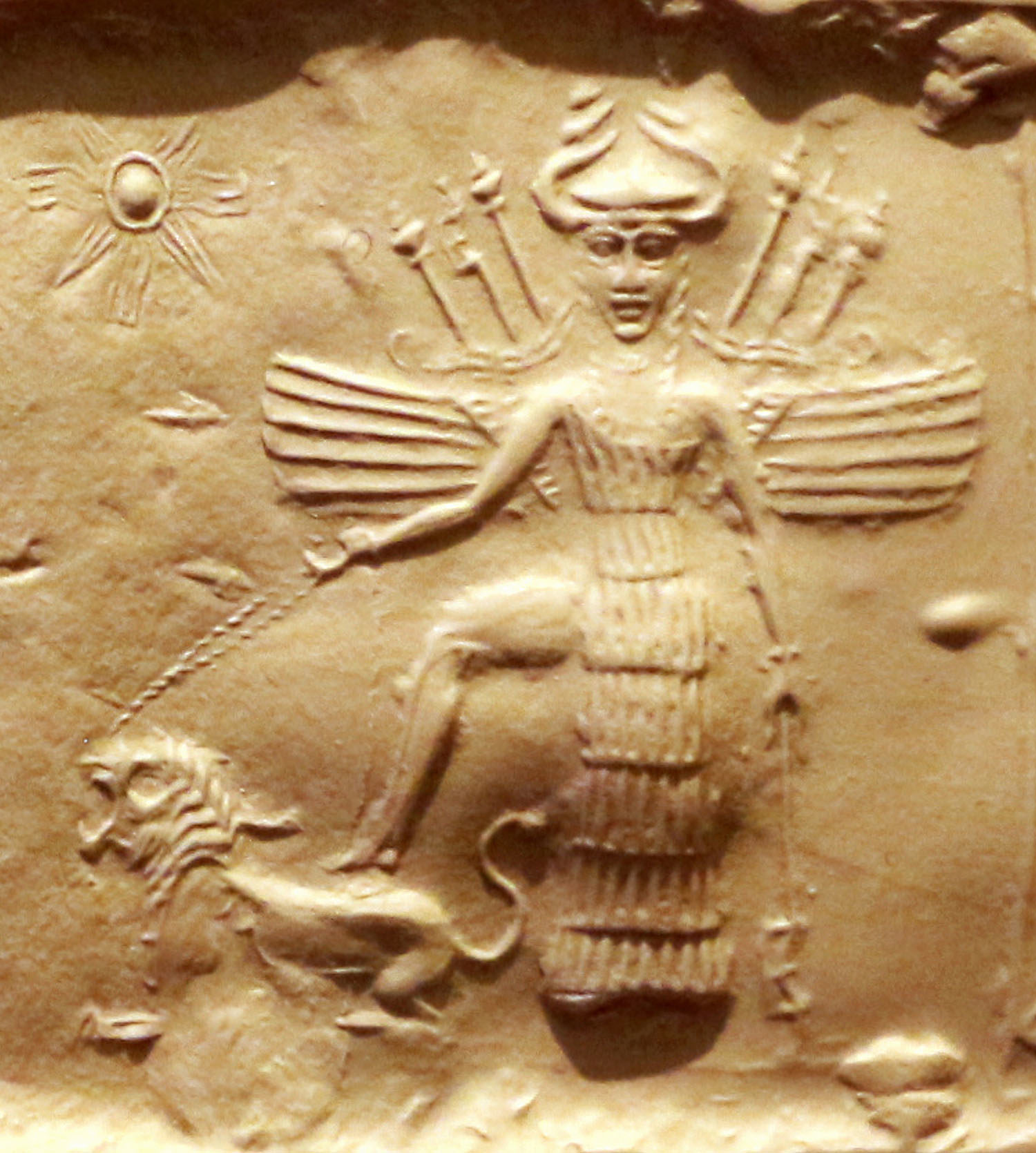
The earliest references to the name Inanna are on clay tablets from the Eanna district of Uruk; in levels below the remains of major religious buildings dating to the 3rd Dynasty of Ur [ca. 3,200 BC or 5,200 BP]In summary, if we are to take the above Sumerian, Judaic, Mayan, Aztec and Etruscan myths as reflections of actual astronomical events involving Venus, we might expect the following:
- Paul Collins, The Sumerian goddess Inanna
- first pass ca. 5,200 BP (first mention of Innana/Venus)
- 7 passes (the 7 rings of the Underworld)
- decreasing level of destruction (loss of garments and jewels)
- 7th and last pass ca. 4,600 BP (first mention of Innana's descent/capture ca. 4,500 BP)
- time interval between passes is 50 and/or 100 years (Aztec, Mayan and Judaïc traditions)
Was it a single event whose effects lasted for several centuries? Was it a series of discrete events? If it's the latter, how many events occurred? At what date? What was the time interval? What was the magnitude of each event?
Zooming in 5,200 - 4,600 BP
It's now time to zoom in and to examine high resolution records. To do so, we have to compile raw data from the ice core (dataset from NOAA or from the NBI).
Here is the bidecadal chart (20-year increment) of the average temperature variations from ca. 5,200 BP to 4,600 BP. This average is based on the temperature reconstructions from five regions: Antarctic, Southern Hemisphere, Tropics, Northern Hemisphere, and Arctic:
The diagram below reveals 7 temperature drops ca. 5240, 5060, 4960, 4860, 4800, 4720, 4660 BP (see dates in red on top of the curve).Notice that overall each pass induces a less severe and less lasting cooling period (shown by the yellow triangles). For example, pass 1 induced a temperature about 15 times more severe and 5 times longer lasting than pass 7. This overall decrease in cooling severity is consistent with progressively less destructive passes of Venus, as suggested by the Inanna myth.
Also note the recurring time intervals between passes (green numbers at the bottom of the chart): 60 years between pass 4 and 5, and between pass 6 and 7, which is quite close to the Maya, Aztec and Judaic tradition fixing respectively the recurrence of Venus passes to 52 and 50 years.
On the same note, the 100-year time gap between pass 2 and 3 and between pass 3 and 4 is very close to the 105 years between Venus returns according to Etruscan mythology.
The chart above suggests that cometary Venus returned every 60 years and every 100 years. So, maybe the two sets of mythologies (Mayan 52- year cycle, and Etruscan 105-year cycle) were both right, only they were referring to different passes of cometary Venus.
Also the interval between each of the seven passes tends to diminish overall from 160 years between the first and the second pass to 60 years between the sixth and the last pass. This overall interval decrease is consistent with a progressive capture of cometary Venus in the Solar system, where its orbit progressively becomes shorter and more circular.
While the time gap between each pass decreases overall, there is however one exception: the time gap between pass 5 and 6 is longer (80 years) than the previous time gap between pass 4 and 5 (60 years).
This non-linear decrease in time intervals between the passes of cometary Venus might be due to the fact that comets, even short period/stable ones, do not return at exact periods because of perturbations caused by astronomical bodies, particularly larger planets.
This variability even applies to the most famous comet of our era: Halley's comet, which has an average period of 77 years, but whose single periods span from 74.33 years to 79 years.
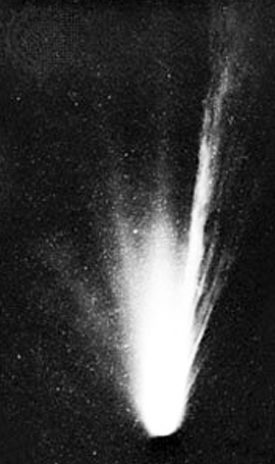
Because of the limited temperature variations induced by this EOO variable, it is neglectable when dealing with major events on a millennial scale, but it is relevant when dealing with high resolution temperature reconstructions:
The upper and the lower Earth orbital oscillation line, within which the Earth climate varies, if not impacted by large cosmic bolides. As we demonstrate, the Holocene temperature evolution does not remain confined within these upper and lower horizontal lines, because strong cosmic impacts always and necessarily produce a strong temperature down-spin spike, followed by a strong upward temperature rebound spike, regressing thereafter. This is the so-called Z-shaped temperature pattern of each cosmic impact on Earth.Here is Joachim Seifert's temperature graph:
- Joachim Seifert, Climate Pattern Recognition In The Mid-To-Late Holocene
In the graph above, the time period we're studying (ca. 5,200 - 4,600 BP) is in pink. The green dotted line is the theoretical Earth temperature if the only driver was the Earth Orbit Oscillation (hence the sinusoidal shape). But we can see that the recorded temperature curve (solid black curve) departs from the theorical EOO curve in several places.
Seifert lists 4 catastrophic events that caused some of those departures.
- Pass ca. 5,210 BP (3,210 BC): hypothesized to be related to the Andaman Gulf impact, shown by a red arrow in the graph above:
The BC 3200 event is recognized in lake filling data, both at Lake Accesa and Lake Constance, as described before. The BC 3200 [...] The BC 3200 cosmic impact produced a Z‑shaped temperature pattern, which lasts until 2900 BC. This cosmic impact is responsible for the delayed temperature peak at 3000 BC, displacing the regular peak at 3081 BC by 80 years.Notice also that one the greatest volcanic eruptions of the past 10,000 years also happened ca. 5,200 BP (3250+/- 200 B.C). It produced 175 ppm of sulfuric acid fallout and is attributed to the Akutan volcano in Alaska, USA.
Looking for prospective impact candidates of this time, we found a cosmic meteor impact, striking the Andaman Sea. At Cape Pakarang (west coast of Thailand), a mega-‑tsunami struck (Neubauer, 2011) at 3200 BC, as an outstanding megatsunami event. Regular seaquake tsunamis are not forceful enough to destroy reefs and to move enormous cut-‐‑off reef-‐‑boulders far inland.
- J. Seifert, F. Lemke: Climate Pattern Recognition in the Mid-Holocene (4800 BC to 2800 BC)
- Pass ca. 4,807 BP (2,807 BC): the Burckle impact, shown by a dark green arrow in the graph above:
[...] the Burckle impact (Gusiakov, 2010; AbboM, 2006). The date 2807 BC is given in Chinese celestial observation records. This impact was enormous in size and effect, the impact crater is 20 km in diameter. This impact sent global temperatures instantly deep down, the enormous fall-out of atmospheric moisture produced widespread global inundations.4,807 BP is also the suggested date for an asteroid or comet impact occurring between Africa and Antarctica, around the time of a solar eclipse on May 10, based on an analysis of flood stories - possibly causing the Burckle crater and Fenambosy Chevron.
- J. Seifert, F. Lemke: Climate Pattern Recognition in the Mid-Holocene (4800 BC to 2800 BC)
- Pass ca. 4,700 BP (2,700 BC): The Campo de Cielo impact shown by a red arrow in the graph above:
Campo de Cielo impact at 2700 BC. The literature (Barrientos, 2014) actually sets a time frame of 2840-2146 BC, but the only impact date remaining is at 2700 BC. This impact is small to medium, delaying the temperature recovery after the Burckle event by one century.- Pass ca. 5,080 BP (3,080 BC): Seifert identified a fourth departure from the EOO curve that he attributes this time to a potential mega-eruption (see turquoise trough in the diagram above).
- J. Seifert, F. Lemke: Climate Pattern Recognition in the Mid-Holocene (4800 BC to 2800 BC)
Interestingly, the 5,080 BP event coincides with the largest suspected volcanic eruption over the past 9,000 years, with 255 kg/km2 of acid fallout (sulfuric acid - H2SO4), recorded in Greenland. Notice that this alleged mega-eruption has not been attributed to any known volcano.
For comparison, the eruption of Krakatoa in 1883 'only' generated 21 kg/km2 of acid fallout in Greenland. That's 12 times less than the 5,080 BP event.
In addition to the suspected mega-eruptions, a cosmic impact was documented about this time, 3050 BC (5000 cal BP): The Morasko Crater Field in Poland (Wojciech, 2012). This impact field contains 8 smaller craters; peat sequences with meteor metal spherules were dated.
On top of the 4 departures from the EOO curve spotted by Seifert, there are 3 additional discontinuities, occurring towards the end of the 5,200 - 4,600 BP period. Their dating corresponds to the lighter passes of Venus:
- Extra pass ca. 4,960 BP, as indicated by the dark blue arrow in the EOO diagram,
- Extra pass ca. 4,870 BP, as indicated by the light green arrow in the EOO diagram,
- Extra pass ca. 4,650 BP, as indicated by the turquoise arrow in the EOO diagram.
So, in total, we have seven hypothesized passes of Venus occurring between 5,210 BP and 4,650 BP.
Notice that the Seifert EOO diagram is based on Greenland ice core (GISP2), while our duodecenal (20-year increment) diagram is based on the average temperature reconstruction from 5 regions: Antarctic, Southern Hemisphere, Tropics, Northern Hemisphere, and Arctic. Despite using different sources, both diagrams provide a strikingly similar image: 7 temperature drops with virtually the same timing.
As shown in the table above, for the 7 events described previously, the dating difference between the GISP2 temperatures and the regional average reconstruction is only 13.8 years. It is not a bad match at all for events that happened about 5,000 years ago, knowing that the error margin for ice core dating is typically 2%, i.e. about 100 years for events that occurred 5,000 years ago.
Conclusion
Most literature dealing with cometary events posits regular cycles or a one-time event. While it is often true, it's not the whole picture. The seven passes of Venus described above were neither a one-time event nor part of a constant cycle.
Cometary events can be ongoing or a thing of past. Likewise they can be periodic, pseudo-periodic or a one-shot event.
For example, we know of ongoing periodic cometary cycles like the 27.9 million year cycle followed by Nemesis and its accompanying cometary swarm (see chapter 13 to 19 of Earth Changes and The Human-Cosmic Connection) or the ongoing 3,600 year cometary cycle described in my article 'Volcanoes, Earthquakes And The 3,600 Year Comet Cycle'.
There are also ongoing pseudo-periodic cycles like Comet Halley, whose average period is 77 years, but whose single periods span from 74.33 years to 79 years.
There are one-shot events like the 12,900 BP cometary event described in my article 'Of Flash Frozen Mammoths and Cosmic Catastrophes'.
And finally there are past pseudo-periodic comets like cometary Venus from 5,200 BP to 4,600 BP with decreasing orbital period: from 160 years for pass 1 to 60 years for pass 7.
In my previous 3 articles, I dealt mostly with cometary events:
Of Flash-Frozen Mammoths: Cometary event that triggered the Younger Dryas
Did Earth 'Steal Martian Water? Cometary Venus pushed Mars close to Earth
Volcanoes, Earthquakes And The 3,600 Year Comet Cycle
All of these refer to ancient history. Cometary events seems so remote when observed from a human timescale. However, in 2013 the Chelyabinsk overhead explosion released 30 times more energy than the Hiroshima bomb and damaged more than 7,000 buildings.
More recently, the meteor impact in Akure, Nigeria that created an 8-meter-deep, 21-meter-wide impact crater and destroyed 70 buildings reminds us that cometary events are not just an abstract concept that belongs exclusively to the distant past.
Despite their apparent remoteness, cometary events are very real and might actually be one of the main punctuators of life and death on Earth. Most mass extinctions were triggered by cometary events and, interestingly, they were followed by the appearance of more complex forms of life.
We can witness this phenomenon, for example, at the Eoceone-Oligocene (E-O) boundary where numerous Eocene species went extinct and were "replaced" by the more complex Oligocene fauna:
Even more open landscapes allowed animals to grow to larger sizes than they had earlier in the Paleocene epoch 30 million years earlier. Marine faunas became fairly modern, as did terrestrial vertebrate fauna on the northern continents. This was probably more as a result of older forms dying out than as a result of more modern forms evolving.There is a similar pattern at the Cretaceous-Paleogene (K-Pt) boundary (attributed to the Chicxulub impact) where numerous Cretaceous species went extinct and were 'replaced' by the more complex Paleogene fauna:
Source
The Paleogene is most notable for being the time during which mammals diversified from relatively small, simple forms into a large group of diverse animals in the wake of the Cretaceous-Paleogene extinction event that ended the preceding Cretaceous Period.If major cometary impacts trigger jumps in the complexity of life on our planet, the question is: how? One possible mechanism is via cometary-borne viruses. The presence of organic material in comets is now hypothesized by mainstream science. And we know that viruses can transfer DNA to their hosts.
Source
So, are major cometary events the window of opportunity that 'intelligent design' uses to remove obsolete life forms (mass extinction) and to introduce more elaborate life-forms (life explosion) via the new DNA codes carried by the accompanying viruses?
That will be the topic of a future article.

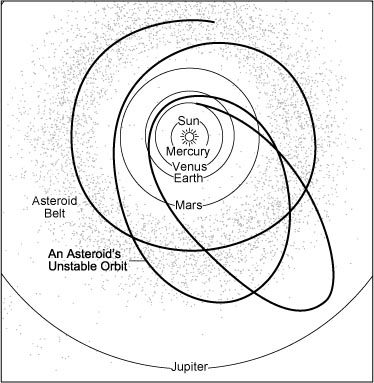
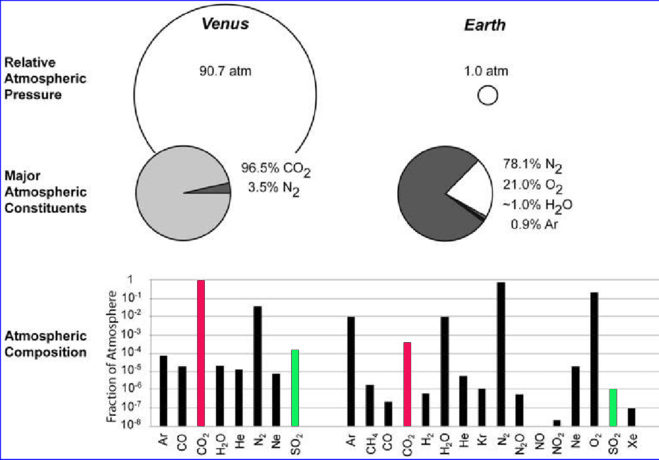
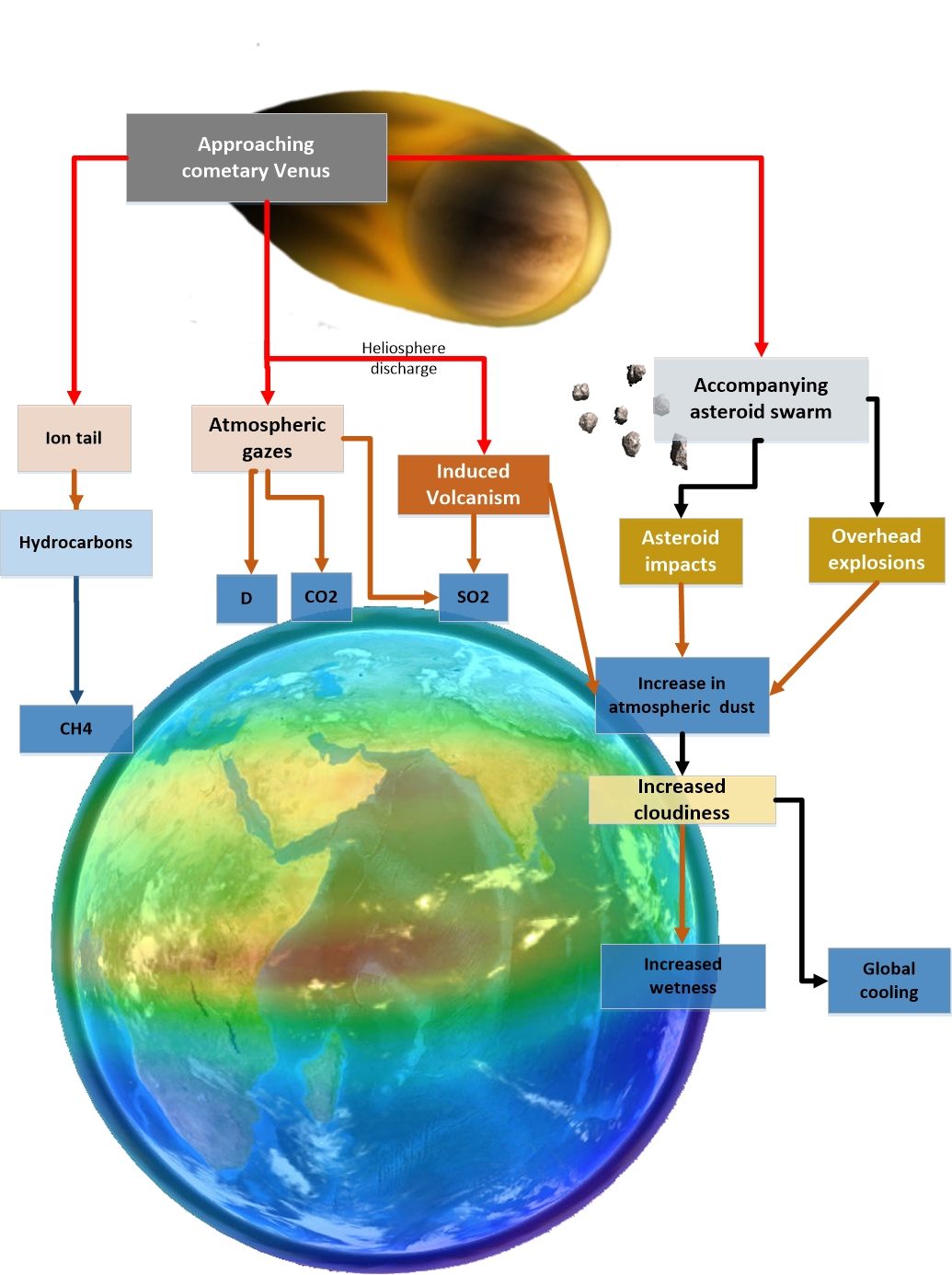
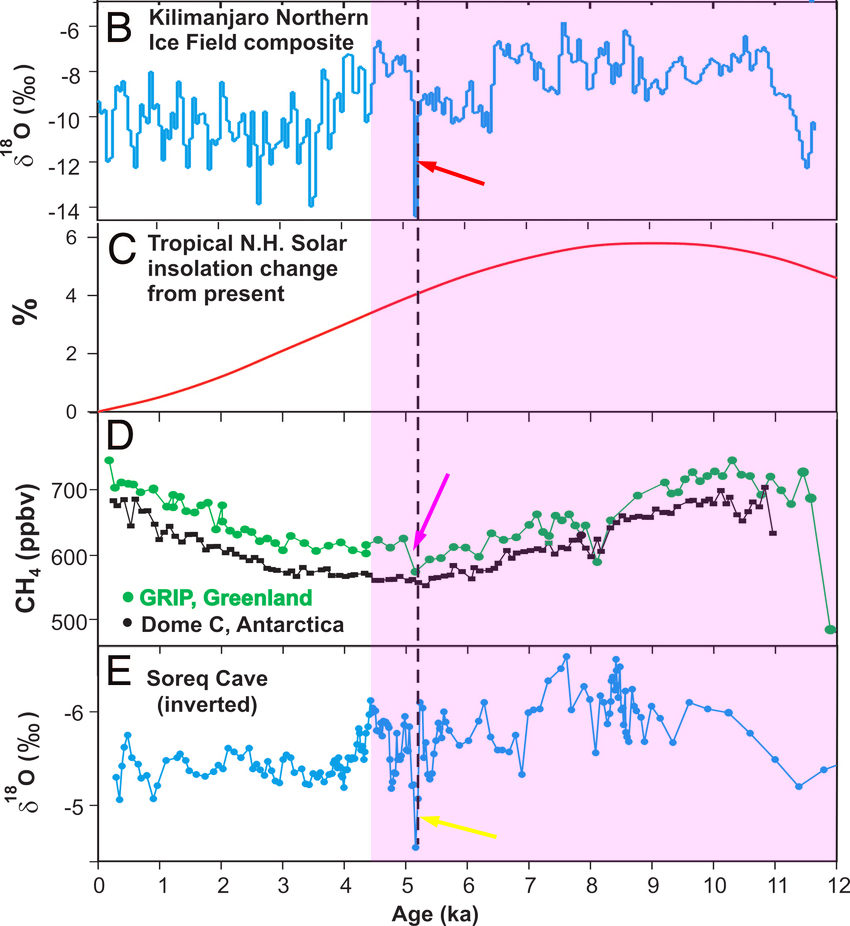
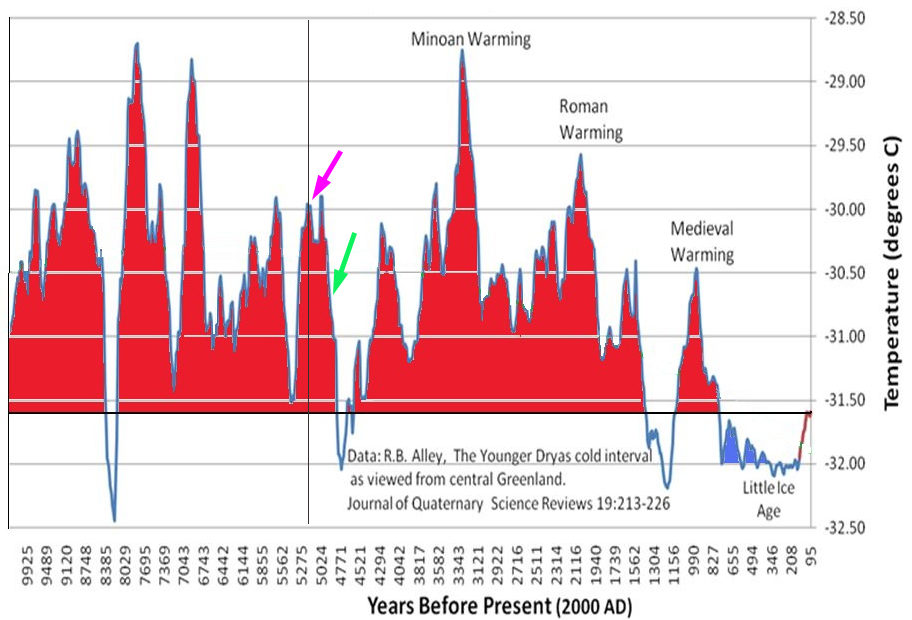
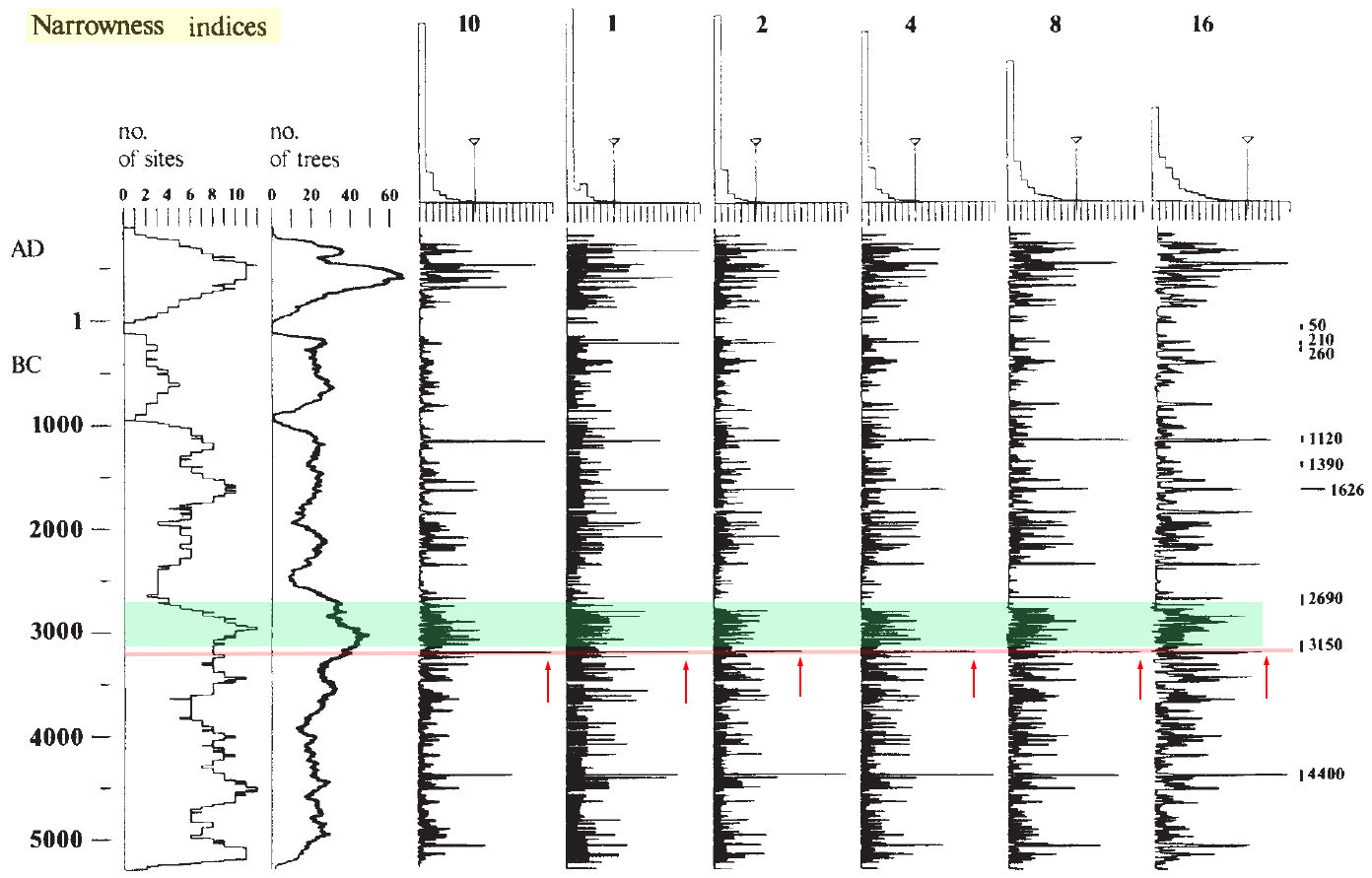
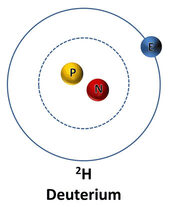

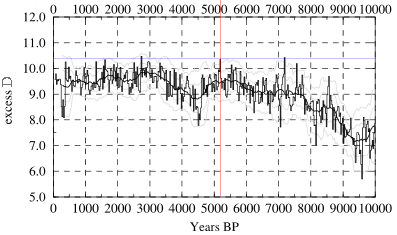
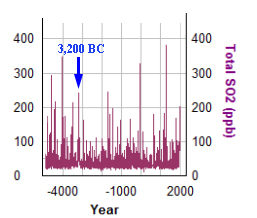
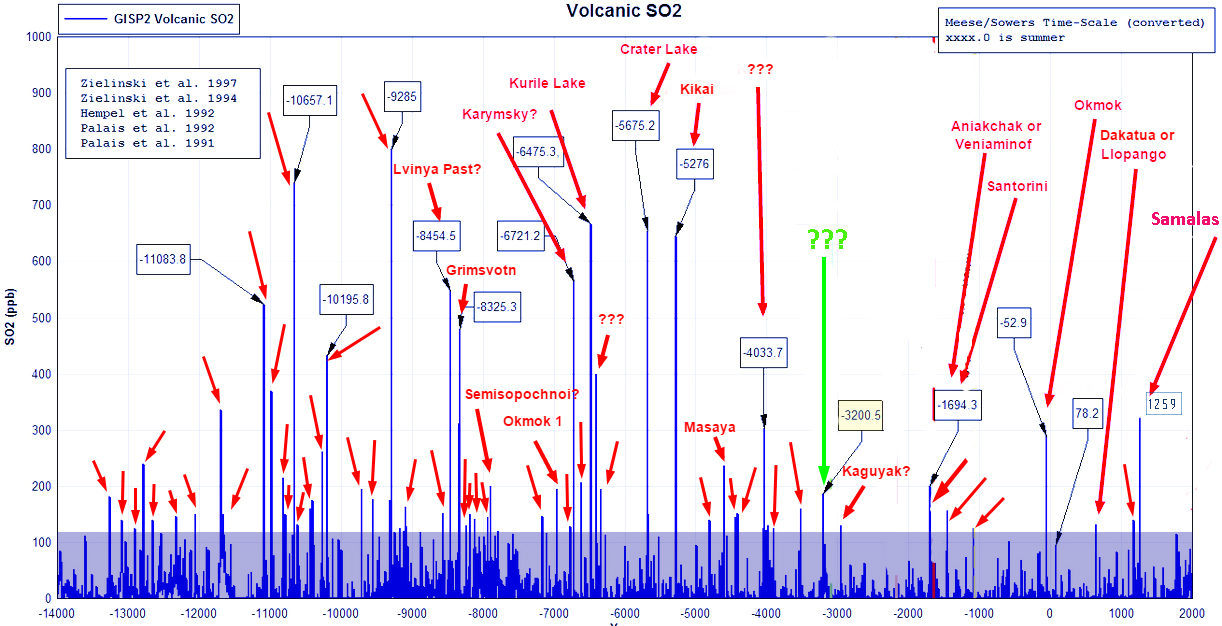
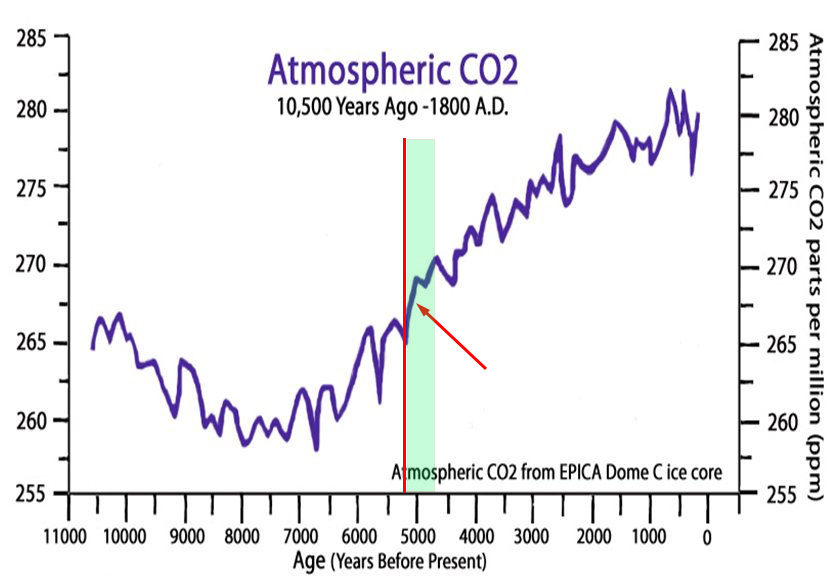
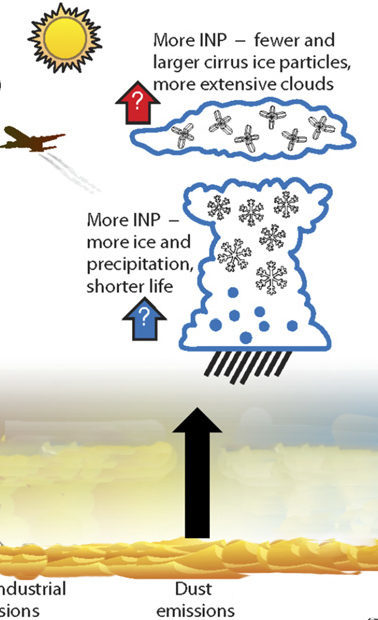
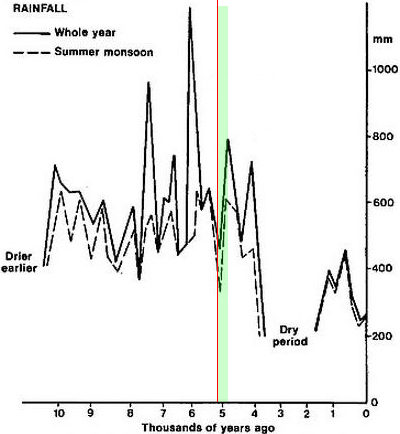
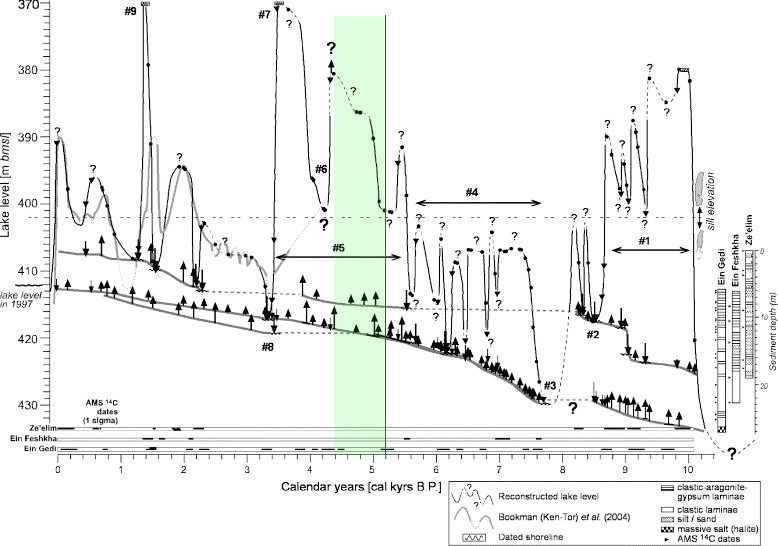
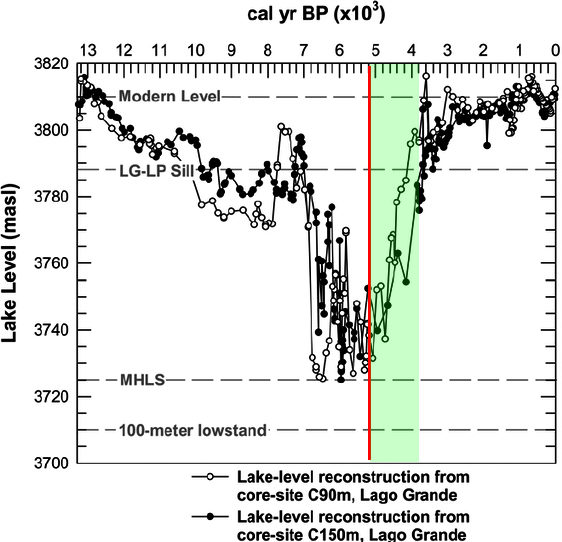
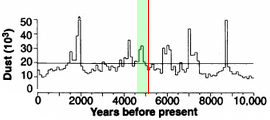
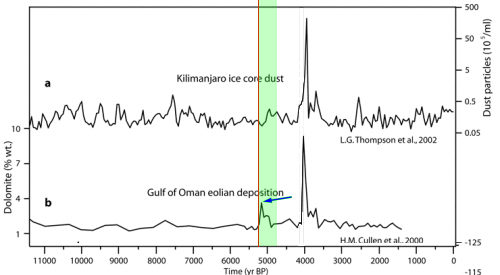

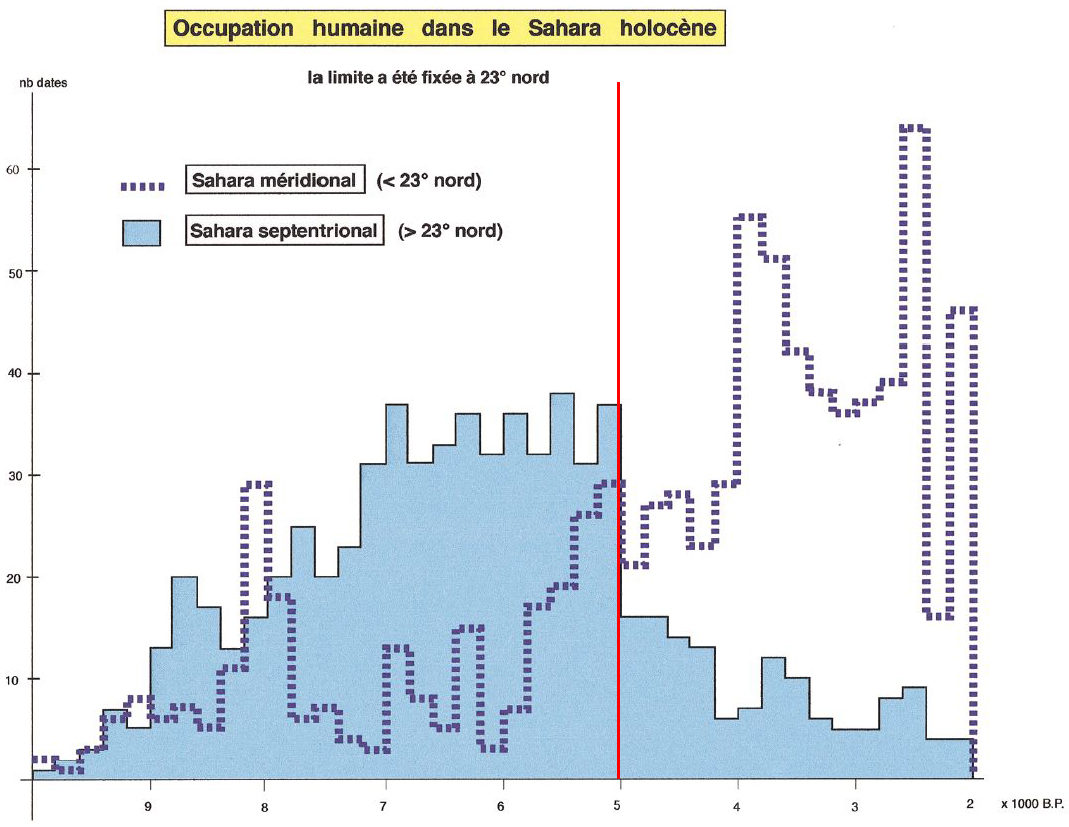
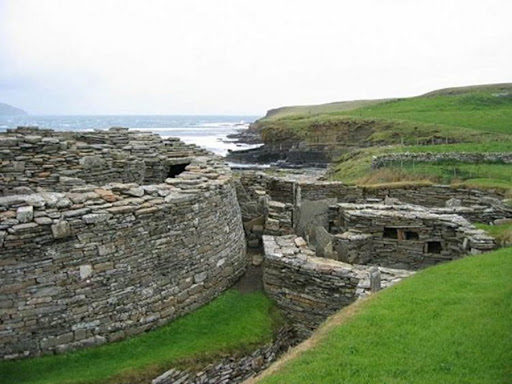
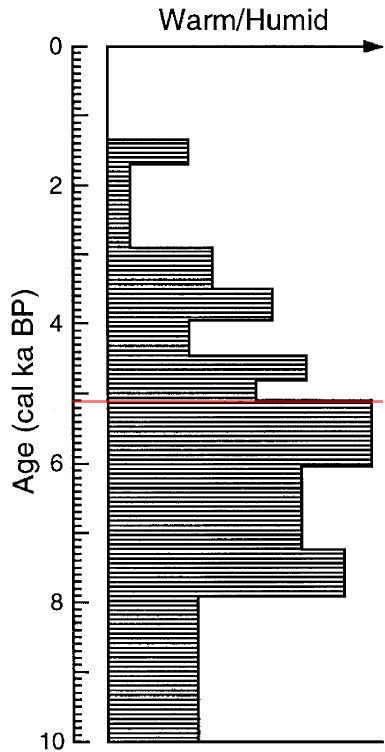

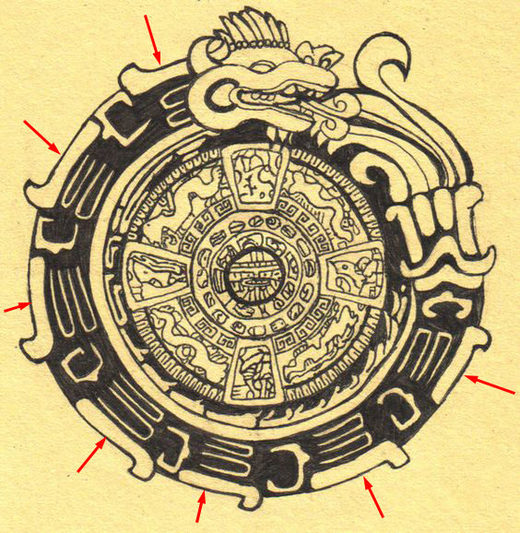
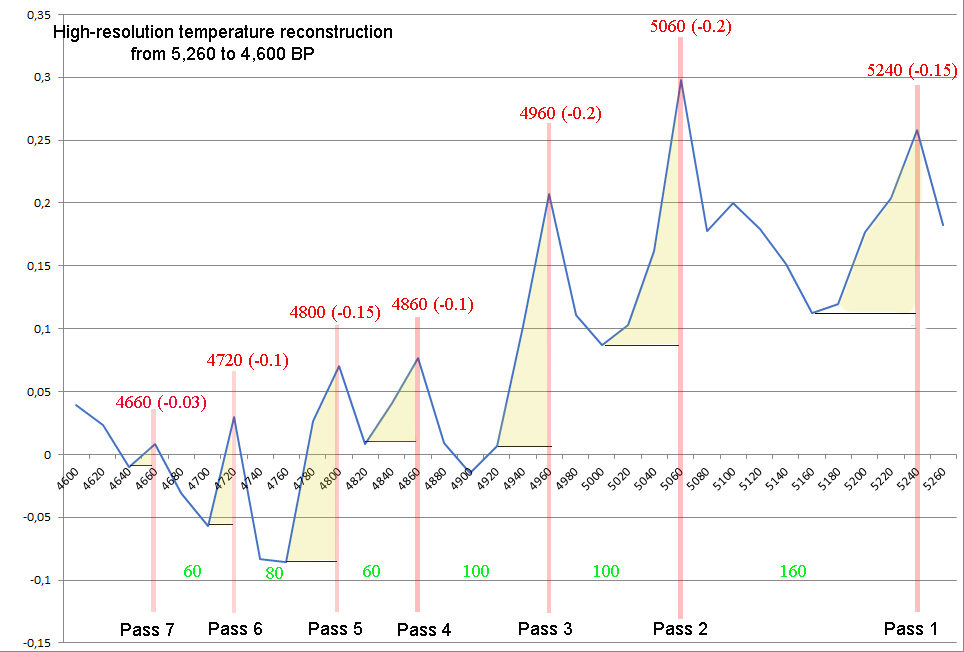
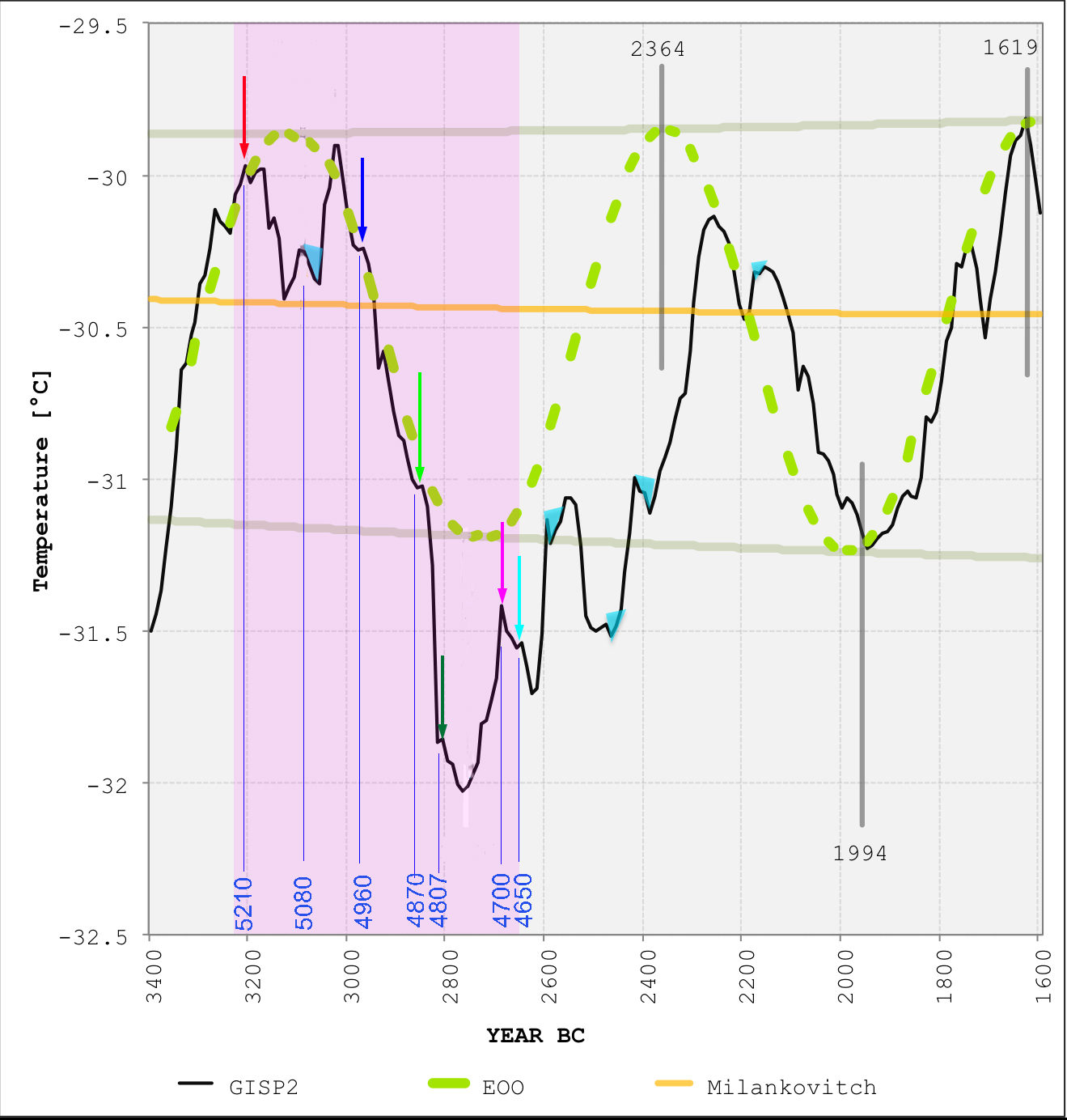



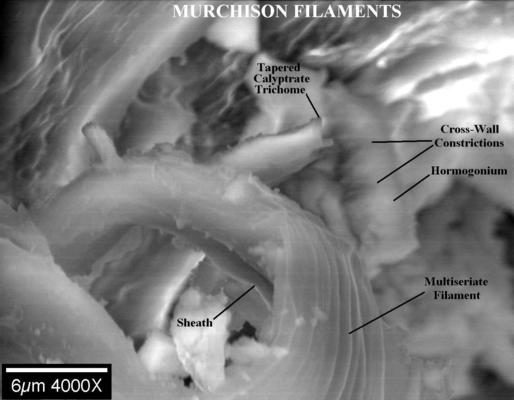



Reader Comments
(As is his Ages in Chaos, which I've not read yet.)
Venus no fun without her Marsian buddy
Of course YIN ☄💥🔥💃🕺
Aint nothin' if not for that babe!!... and gals still cant be Priests!! WakeyWakey YANGYang
Regarding the recent explosion and crate in Akure: I read an eyewitness account from the site by a truck driver who was stopped by police about 600 meters from where the crater is now, but before the explosion. Police told him that a truck was on fire and that it carried explosives for mining work in the area. Moments later the blast erupted and hurled bits of steel into the air, one piece crashing down on the truck and amputating a leg from one of the men in the truck.
“We know that policemen escorted the explosives, from the explosive unit. If there is nothing, what would they have escorted? If they did not carry anything, why would they stay there? “We all knew that there was an explosion, there was a vehicle involved, the vehicle was shattered beyond recognition."
Read more at: [Link]
Scientist claims massive crater in Akure, Nigeria caused by METEOR IMPACT
A Professor of Geophysics at the Obafemi Awolowo University, Ile-Ife has debunked the explanation given by Ondo governor Rotimi Akeredolu and the police for the deafening blast experienced early...AND
Best of the Web: Massive explosion leaves giant crater in Akure, Nigeria, dozens of buildings damaged - UPDATE: Expert suspects METEOR IMPACT
On March 28 morning, a massive explosion rocked a suburb of the city of Akure, the capital of the southern Nigerian State of Ondo. According to Nigerian sources, the explosion split Akure-Owo road...Better said: "The Power of BS!" (Aka, "Hell, the idiot proles'll buy it! What, me worry?" )
The interactions of Venus as a comet with the Earth began around 5200 years ago to about 4600 years ago. However the Younger Dryas event of 12800 years ago or so was the initial appearance of Venus as a comet into the solar system disrupting Mars from its orbit and its interactions with the Earth... That is my current understanding, is that in the ball park? (pardon the pun) Currently reading Prehistoric Life, the definitive visual history of life on Earth. The appearance of even simple plants, marine life and so on early in the Earth's history and the mass extiniction period in the Ordovician followed by the Silurian and Devonian periods and the increasing complex life forms that appear is just WOW! The progression is visible where increasingly complex life forms appear and in conjunction with the Cs cosmology, it is just staggering!...and I'm only at the Devonian period in the book.
Can't wait to read your article on this topic!
[Link]
Makes me wonder how this will affect us on this BBM.
Great article Pierre. And great commentary too! In particular, RC, thanks for the Velikovsky link.
Connects a lot of dots.
This bit piqued my interest: The New Scientist article-link states: Read more: [Link]
I wonder if the ion tail is always that long in and around Sun's orbit, or if its held ever so thinly together for as far out long and thinly as it does - reaching all the way to Earth ONLY when Venus is aligned with Earth because Earth's gravitational/electro-magnetic pull significantly 'stretches' it so much further, and subsequently thinner, and it is only then when SOHO is able to detect the ion tail signature at all?
Also, the SOHO satellite, detecting Venus' ion tail, orbits about 1.5 million km out from Earth, which is an orbit of about 3x further out from Moon's orbit around Earth.
So I wonder if the Inanna symbol of the crescent moon so often depicted 'cupping' the "star" of Venus - since adopted as the universal symbol of Islam - is a symbolic representation of the Moon 'capturing' the final wisps of the ion tail before otherwise reaching all the way to Earth? I'd be interested if the ion tail actually does reach all the way to Earth in our times any longer, or whether now it fizzles out at the intersection of the Moon's orbit?
A brief Wiki summary of the history of the 'Star and Crescent' [Link]
I will start with Horns of Moses.
Speaking of Venus though; Its sensationally bright at the moment, and has been ever since the New Year. I mean, its really bright right now! Astronomers say its currently the closet to Earth which it does every 8 years - its complete cycle in our northern skies. For the last month they keep saying it'll start dimming now, but it don't look it to me. If anything, I'm sure its getting slightly brighter still.
And, I'm sure its notably brighter than it has been during previous 8-year cycles. The last time Venus would have been this close; I was living in the rugged uplands of Wales far away from any light pollution (and no, it wasn't cloudy and rainy all the time). I was outside a lot, at night, even in winter. If there wasn't a moon out, the nights were literally pitch black - bar the stars which shone brilliantly. I'm sure I would have noticed at the time, particularly as I like to stargaze in those high-up light-free areas when I have the chance.
Now, was comet Encke initially part of Venus swarm? That's difficult to say. But if Encke entered the Solar system 20-30 kY ago (as proposed by Babadzhanov [Link] ) and if cometary Venus entered the Solar system about 80 kY ago, then Encke and Venus should be two unrelated entities.
This suggests its once-comet status was known and carried down through secret societies.
Curious too, the super-conductive metal, Copper, has been attributed to the alchemical symbol of Venus. From the same Wiki excerpt: So there could be another clue, there, to the esoteric "knowings" guarded by certain alchemic 'mystery schools' with relation to Venus' and Earth's cosmic electromagnet relationship.
Abso-cracking-lutely!
(Love, Money, Relationships, Self-Worth)
3 big player planets are also retrograde in May ... Pluto Saturn Jupiter.
Relax the pedal til end June and especially end August and SEPTEMBER.
(On the 8, 9, 10 stay under a rock).
Your thoughts about Velikovsky's points about sundry ancient earth records/buildings which are missing Venus, despite it being the easiest planetary body to observe from her? (Or however he termed it.)
The current magnitude of Venus is -4.5, and in September of 2018, Venus shone at magnitude -4.78. In December 2013, Venus reached magnitude of -4.9. It is a regular cycle. You are confusing this with the 5 orbits of Venus around the Sun every eight years. Not the same thing! Like I said, ''never trust a hippy.''
I believe you are referring to "albedo": [Link]
A few points about that to bring to attention if I may. Lets start with this:
Apparent Magnitude: [Link] Absolute Magnitude: Absolute Magnitude and Inverse Square Law of Intensity: It makes quite clear to me determining how albedo is measured against the backdrop of Space and how its received and measured by our instruments of measurement, is not quite fixed in stone.
In light of that I stumbled across this guy who makes a couple of valid points, I think. From March 2017: [Link] If what is said immediately above is in any way true, which it probably is (to confirm the sources requires annoyingly complicated pdf downloading), then just how universally "absolute" are our AGREED measurements determining a planetary body's brightness, and measured from Earth? And from observing planetary brightness from Earth, even if we take away the Toros-field bending light, before entering, around the planet's sphere, how might light entering our atmosphere have potentially 'changed' the observable brightness measured over the recent years to effect apparent brightness, certainly of a close planet like Venus?
I'm reminded of an excerpt from this article by Laura:
SOTT Focus:Chemtrails? Contrails? Strange Skies
A few things that should be considered when talking about so-called "chemtrails": 1) Obviously, there is some "spraying" that goes on and it's not for the benefit of humanity. I've heard a few...Then I'm reminded of whether or not the Speed of Light in the vacuum of Space is at all a universal constant in the space/time continuum, as is presumed 'a given' by physicists and the like. Here is a good (and humorous) talk by Rupert Sheldrake touching on that: ("Intellectual Phase locking" = 'Speed of Light is Constant?'. LOL) - approx.10min - 13mins mark:
[Link]
Brightness measured over space and time may be fluctuating, and our ability to observe may not be observable with science on an individual basis, and we may or may not realign our senses with the fluctuations, depending on the POV of the individual observer.
So you see, Graeme, there are many possible intervening "vectors" to take into account that may not be easily accounted for. Or it could be something much more simple; it could be that your more 'elderly' eyes might be failing you as you get older whilst my more youthful (relatively speaking) spritely eyes are a little more observant to those subtle shifts and changes that you might not notice
I should add; I have traditionally been more of a night-owl so I rarely get any chance to see the brilliance of Venus as the Morning Star - so I would have missed those.
( Vega* : are Vegans really aliens sub-atomically absorbed from Vega? Hoho..)
My eyesight is still 20/20. Had them tested about 18 months ago. Need to for job. Anyway how do you know if I am older than you or not? To be honest, my eyesight is still better than some people I know who are younger than me. Never need glasses to read, can read a car reg from 100 yards etc.
Anyway BC, you have gone through a lot of different topics here that really don't prove anything. Your initial assumption was that the 8 year 5 orbits of Venus around the Sun is someway connected to the apparent brightness of Venus. It isn't. The only thing relevant to the earlier discussion is apparent magnitude.... that is it. Venus at the moment is about -4.5. Whether that varies slightly or not won't really be detectable with the unaided eye, so there is nothing unusual in the apparent magnitude of Venus at the moment. I did notice that Aldebaran semed a little fainter than usual last night, and that Betelguese is around ''normal'' again. So, I wouldn't waste time being blinded by science over the issue. Save your energy for more important stuff.
Free advice, no charge.
Anyway, you can see Venus during the day time at the moment if you know exactly where to look. Don't look at the Sun obviously if you want to retain your eyesight.
Yes, your hunch is correct, I'm 51, soon to be 52 though, in June. Not too far off, never is these days! Lol.
Another crazy Gemini,... with moon in Aquarius, so doubly crazy perhaps? Yes, it is a fascinating subject. Having a look through a telescope at the star studdied sky and the planets, the moon and so on is a humbling experience, even without a telescope, it is a humbling experience. Something in our artificial world that is sorely lacking in both senses. Several subjects that are discussed here have been an interest of mine since childhood. Astronomy among them.
The middle ''star'' in Orion's sword below the belt is the Great Nebula in Orion, or the Orion Nebula! No worries. Feel free to chat anytime. Nothing wrong in investigating many topics, but you took a long winding route in this particular case. So... Yes, part of the work. Most definitely!
Yes it can do, but sometimes all you can do is be there for them, they need to work out their own salvation in their own time like the rest of us.... So, sorry if I seemed to cut you short when you were in flow. Could be, I don't know. But as far as I can tell, nothing that unusual however. Yes, north west. Looking at Venus through a telescope shows phases, like the moon does. A good pair of binoculars could do the job though. Mercury does too if you can see it, as Mercury is much closer to the Sun and has lesser ''elongation.''
Anyway, enjoy the nice weather.
Just to be clear; everything I bring to the fore and we talk about, whether a long winding route or otherwise, is all from belief of the heart. I don't make up contrived stuff just for the sake of making conversation. Any such conversation are still of topics I believe in and believe to be valid points - even if at the end of discourse it is shown to not be so, and I am wrong. Indeed! I believe, if we choose our families, then we must love them for our own salvation - precisely because it is DIFFICULT.
There are times "flows" must be cut short. Although you are likely right... I guess that's one thing we're just gonna have to 'agree to disagree' on... for now. (oh yeah, "stubborn". Lol.) I will. I'm actually hoping for something spectacular with Jupiter in the not too distant future. The Cs say its a 4D planet, which is why it has that 'not-quite-real' look to it, which most might attribute to its gaseous atmosphere, but even so it does look quite surreal. I reckon Nemesis inbound might start firing up ol' Jupiter - especially as it is technically a 'soft sun', from what I understand, due to it emitting more energy than it receives. You too.
Oh, I've found that thread, so I will get round to answering the outstanding questions about Being and Non-Being. By this weekend.
Lovely creature
Wow Graeme, that's quite an astrological low-down! I think even LindaMay is impressed!!
earth, as so many have predicted, going to acquire an
additional sun?
A: Maybe.
Q: (T) An additional sun, like if Jupiter blows up? Is Jupiter
an unborn sun?
A: Jupiter is already a star.
Q: (L) Why do we not perceive it as a star?
A: You are still learning. Earth is a star to be.
Q: (F) How the hell can that be? (L) If a planet...
A: Every thing cycles fully.
Q: (L) If a star is a transition point from one dimension to
another, when the earth moves into 4th density, is it going to
appear as a star to the people in 3rd density?
A: "Gas planet."
Q: (L) It will appear as a gas planet? (J) Just as Jupiter
appears to us.
A: Jupiter is level 4 density.
Q: (L) To whom does Jupiter appear as a flaming sun, at
what level?
A: 5, 6, and 7.
Q: (T) What does it look like in 4th?
A: Earth.
Q: (T) Jupiter looks like Earth and Earth looks like Jupiter in
4th density?
A: No.
Q: (L) What does Earth look like in 4th density?
A: Invisible.
Q: (J) Huh? (L) What do you mean, invisible?
A: Only visible upon request. Variability of physicality.
[…]
So, let me ask some questions for A** A** wants to know what the core of Jupiter consists of?
A: Basal. In 3rd density it is known as iridium.
Q: (L) What is the diameter of the solid core?
A: 3 microns.
Q: (L) Are you saying that Jupiter is gassy and slushy all the way through?
A: Yes.
Q: (L) So Sitchen and others may not be correct in saying that Jupiter has an earth sized solid core?
A: If that is what they are saying , but remember, Jupiter, Saturn and others resonate to vibrational levels greater than Earth. You are looking directly at density 4 when you view Jupiter, which is why photos of it from up close appear "surreal," more like drawings.
Q: (L) Do beings inhabit Jupiter?
A: 5th density and up.
Q: (L) Are there any organic beings on Jupiter?
A: Organic is 3rd density concept.
Q: (L) So the probe will not detect any life?
A: No.
Q: (L) Is this probe that is going to plunge into Jupiter disturb anything there in any way?
A: No.
Q: (L) What is the internal 3rd density temperature of Jupiter?
A: 7000 degrees K.
Q: (L) What is the primary chemical composition?
A: Ammonia, hydrogen and nitrous oxide.
Q: (L) There is a rumor going around that a large object coming our way, that is a gigantic, intelligently controlled space craft, loaded with Lizzies. Could you comment on this please?
A: Comet cluster. Sitchen believes it is a "planet."
Further on the transcript - and some real juicy plums here, with some very pertinent Q&A's to our current Earthly disposition, in amongst the answers to our origins; the human species and of different racial groups: I reckon many of us here would do well to digest much of this.
I don't know if you have read 9/11 The Ultimate Truth by Laura and Joe? Certainly worth a read in conjunction with the information regarding the above session pertaining to the Jews!
The current material I'm reading is, Prehistoric Life, the definitive visual history of life on Earth. Prehistory Decoded by M Sweatman,... Witzel, Settegast, and Guyenot.
After that, I intend to read a few more on psychology, psychopathy and M Behe. Then I think I will read the Wave and Secret History series again. Haven't read them in a while.
I noticed that amazon pulled the plug on the Laurent Guyenot book, JFK to 9/11.
OK kiddies, listen up lol, here is help for that 'in-house' soul clearing
BC... goggle these totem animals, bull (actually buffalo) is your daily energy web... your YIN energy is squirrel (eat nuts, it ll relax you). Your day of birth represents your YANG energy - obviously these work together as ONE. ..... you also have ram -- makes sense eh?!! 2020 is BEAVER year for everyone... so... we ve got to get our genius ON... and your personaltemporary totem at the moment is DOLPHIN... learning how to breath, at your birthday you enter WHALE year!!... at 42 you enter your BAT year, RE-Birth and last year was swan. (If you are April Taurus, DEER, if May Taurus, which i feel, you are BEAR). IF you know your time of birth, find out what your rising sign is in Tropical and also Chinese zodiac. If they are animals, add them to your personal TOTEM (we all have atleast 9 animal medicines in our personal TOTEM). All are to be fit and up and healthy, eat for them, act as them (in balance however) - this is where our freewill has its PLAY, and you ll see your in-house cleaning happening all on its own. BTW, creatures we are fascinated by, collect or collected as kids, or fear, have a place in our TOTEM. WHEN our TOTEM is balanced and in power, as a whole, our automation of self-sabotage ceases.
The film Brother Bear 1+2 are very insightful. READ up on URANUS in Taurus BC - VIRGO has been very busy with 8th House cleanings, deep deep.
Our SUN represents our Identity, Our Moon our thoughts and emotional world, our Rising our ego/personality.
graeme, if your birthday is June 5(Bear) (eclipse in Sagg) you are in for a major ECLIPSE in your 7th House...(this theme lasts til Dec 3 2021)
june is snake month, daily energy web, (aqua moon, i could've guessed). your YIN energy is CROW, the magician, you have monkey, and are in your Jaguar year, moving onto Black Panther. (last year was alligator for you).
Listen to your elder (winkwink )
Regarding the Sun, Moon and Ascendant, I'll tell you what I think they represent tomorrow as I need to go to bed now. If you behave yourself, that is?
The Moon symbolises our first relationship, our first love. Namely mother. Basically very influencial the from birth until about 2 or 3 years of age and of course influencial throughout life. The first 6 months or so are very important in this regard as baby is at one with mother and hasn't developed much of an identity as seperate from mother. The blueprint here will carry forward in life with how one relates to others, expectations etc. A few examples, [Moon square Mercury] could be read that mother didn't understand baby's needs when communicated... like, baby cries because nappy needs changing, and mother thinks baby needs a hug, or fed, or vice versa. [Moon conjunct Mars]. Mother is very bossy and forceful in her behaviour and baby's urge to explore and develop is frustrated and interrupted by an over powering mother. [Moon trine Jupiter], mother encouraged our urge to explore and instilled confidence in our well being, expand social skills (circles), and provided an abundance of affection etc. Such an experience will cast the dye in our later expectations in relationships and what one is overly sensitive about or accurately sensitive about. So, the Moon represents the familiar, the safe, the person as they are. Such tendencies come out in private, or when one is comfortable with others. It is the place we know, feel safe and run to when threatened etc. The 12th house is all the psychic material, conflicts, unresolved issues etc that have been swimming around in the family psyche for centuries that one has inherited. So, the Moon is who and what we are and it comes out when one is relaxed, comfortable, threatened etc. Moon/Saturn contacts have a bad reputation, but requires a lot of effort and work and with time can be something the individual puts to good use in constructive ways regarding self worth. The house position is very significant in all regards.
The Sun on the other hand is the beginning of the process of individuation, it is the heros journey. The Sun symbolizes the process of becoming and when baby starts to crawl around and toddle about, away from mother in the first independent steps, baby encounters father, or surrogate, or sometimes no one. This journey and encounter casts the dye in our journey, the mythical characters one will encounter in the process of becoming, individuation etc. For example, Jupiter, Saturn, Pluto, Neptune etc.
The lunar phase is important also as that describes the ease or difficulty one experiences in the process of growing into the ''hero'' symbolized by the Sun away from the ''womb'' of the family collective and mother. A waning square is a very different dynamic than a waxing square. This applies to all aspects between all bodies. A waning trine between Venus and Mars is very different than a waxing trine between Venus and Mars.
The Ascendant describes the actual birth. How the process was experienced. So, the influence of the Ascendant leaves quite a strong impression on the new born and consequently throughout life. It is our beginning as an individual air breathing creature, and hence symbolizes the unique individual. The Ascendant is the bridge between the collective womb of the Moon and the process of becoming who we are in potential symbolized by the Sun. The 4th house 10th house axis, the meridian has some relevance here to. The 10th house symbolizes the most visible parent, usually mother, and the 4th house is the least visible parent, usually the father. The 4th house is under the Earth and is what we are, our roots and the personal subconscious, the 10th house is above our heads and is the cosmic office so to speak, the highest position one can attain etc. The time, day, month, year and place of birth are essential to calculate this information.
Anyway, although astrology is quite interesting, I haven't really been actively interested in it for a long time, I find the fourth way stuff and the Cassiopaea material etc much more interesting to be honest. Astrology should be understood correctly and applied where necessary within the perimeters available. It doesn't explain many things, like psychopathy for example and a horoscope of a tree and a human may be exactly alike. So, one has to use a fair degree of caution I think.
Anyway, this is a bit off the topic here, so sorry about that.
first up, bravo for your 20/20 vision!! nowadays, that is truly RARE... especially for our youngsters lolllllll. absolutely admirable! (i ve re-started eye exercises, i have my full-spectrum light, but sunshine is back and much stronger, so... i ll keep you posted. I FIND that soooo VIP!)
Now, 15 is Wolf, in your case, your Yang energy. Married to Yin Crow. Life Mission; Magician of Family Affaires Teachings, devoted to the Present Moment.
The Sagg eclipse, will impact your 7th House, meaning RELATIONSHIIPS... could be healing relationship with the self (Sun); eclipses always bring us closer to our healing. As you are a Gem :))))) Sagg is your 1/7. It will be felt, have no doubt -- it could be higher learnings, such as Totems (i sense, cause this is somehow 'a dot' that will connect with more down the line). Jaguar and Panther years are absolutely perfect for this workout. WoW. (I would delegate).
Totems are child's play. Just looking at the creatures pictures/videos in itself, can be groundbreaking n powerfully transformational.
Glad that we agree: Sun is our identity, individualness, Moon our emotional world, Ascendant, our Personality/Ego in this world
N.B. My moon conjuncts my saturn and jupiter in Capricorn, in my 6th squared by my Sun Libra in the 4th.
"Astrology doesnt explain psychopathy"; psychopaths are without heart, maybe that's the answer. How could a Natal Chart explain 'none-living'? (just my perspective).
As for "StandingStillPeople" aka 'Trees', they dont have freewill, therefore, no Ascendant, making the Astrology, pretty... irrelevant (again, just my perspective).
ANIMAL RELATIONSHIPS is what we continuously engage in with ourself, and with the others in our world... WE ALWAYS attract the same animal instincts in our new relationships, therefore, running away from anyone is doomed to fail; we re-meet the same 'tabernakos bs' (lol) in our next 'new friend or boss or neighbour etc'. These instincts within us are the magnets that send out the signals to attract, ALWAYS THE SAME DANCERS... THEY give us the opportunity to bring healing in ourself, to live in peacefulness; so as to eventually master our own impulses, exuding our enlightened (non-dual) beingness in our daily experience (as ego/personality/Ascendant/FreeWill) in service to the Higher Good (the GOOD of all our facets, integrated as ONE).
My turn to hit the goosefeathers
A couple of points you make need correcting. Namely. Sagittarius is the 2nd house in my case. 7th house is Taurus. The house structure is calculated from the Ascendant, and if this isn't known, then the Sun. If the Ascendant is known, then the houses are calculated from there in all cases.
Eclipses are funny things. Many years ago, I did many horoscopes and eclipses are something that quite surprised me. First of all Solar eclipses are very powerful if the eclipse is visible from the location of the owner of the birth chart in consideration, especially when close to an angle, i.e, the MC/IC axis or the Asc/Dsc, i.e the horizon, the lunar nodes and the Sun, Moon and planets. When the eclipse isn't visible, the effect is not much different than a new moon. [This applies constantly!!!] A partial eclipse is quite powerful, but a partial, say over 80% up to a total is extremely powerful! There is an element of fate about it, and whatever is signified by it usually happens in the months leading up to the eclipse. Usually 6 to 9 months prior, but can even be a year prior. The effects can be long lasting, like many many years. The solar eclipse in this regard is much different from a lunar eclipse and these are visible everywhere when the moon is visible. Roughly speaking here, the moon symbolises the past, and the future symbolised by the sun is blotted out by the past symbolised by the moon. An element of fate. Whereas lunar eclipses aren't that much more significant than a full moon. Perhaps it is an opportunity to gain an insight into the inner workings of the area impacted by the eclipse, but in most cases usually a hectic month of an emotional rollercoaster is what is signified, sometimes with some insight after the fact. Lunar eclipses very seldom in effect last longer than a month, but a total or near total solar eclipse can in effect last a life time.
Anyway, I don't really have an active interest in astrology these days, although I do keep an eye on it, sometimes.
The EARTH is my MOTHER, SHE takes care of me.
The EARTH is my MOTHER, I take care of HER.
We ARE here to master, to exude in... a healthy environment a healthy body healthy mind vibrant heart... to embody love .. not to write about it. To kiss .. not to read about it. This is LIVING life in SPIRIT.
Splendid!!
Sorry not getting back to you sooner, Graeme (I know, I'm terrible)
About Being vs non-Being. See here for my reply:
SOTT Focus:The Probability of Evolution
How does evolution happen? By chance, we're told. Stuff just happens. Every step in evolution is an accident. The model we're all taught at school says that evolution happens through random...As re red hair, per Twain: R.C.
*Indeed, I won my last two fights; each by at least 50 yards.) **
** The last two gunfights by at least two seconds each.
RC
These blobs have amassed enormous streams of metal material identified by scientists and could possibly be the cause of releasing water from mantle rocks. Altho their density is not known, is it possible that our sea level rise is so recent that we still see our drowned coastlines clearly?
The heat of the proposed close encounters with Venus could be the source of the released metal blobs?
Coincidentally or not, before the Younger Dryas the sea level was about 100 m lower. And as shown in the following article:
SOTT Focus:Did Earth 'Steal' Martian Water?
While finalizing the writing of the article titled "Of Flash Frozen Mammoths and Cosmic Catastrophes", I encountered an unexpected anomaly. The time of the demise of the mammoths is also known as...the close encounter with Mars and the transfer of Mars' ocean led to a 34 meters sea increase ca. 12,600 BP. On top of that there is the Laurentide impact ca. 12,900 BP that increase the sea level by about 17 m.
So we have two major events (Mars encounter, Laurentide cometary impact) that contributed to the onset of the Younger Dryas AND led to a substantial rise in sea level.
I like the article and comments.
Where does the 29 000 year cycle fit into all that ?
At the same time, official theory folks have no problem claiming that given enough time, there's no problem with seeing orbital bodies eventually lock into tidal orbits, such as the earth and moon. Seems kinda like evolution: "It had to happen a long, long time ago. Take our word on it.)
As re the moon, cause, effect: if women indeed brought the moon here, such would not surprise me. The more I know, the more I know how very little I know.
If you've not read it, you should. [Link]
RC
*Pure spoilers: He writes how - under the influence of a pure 02 atmosphere that the plants flourished, and how folks couldn't breathe. (Folks didn't even know what it felt like to breathe 02 yet.) (Nor that its dryness had little to do with the 02 or Nitrogen breathed, but simply how much water vapor was in it, etc.) You'll notice such when you come across it.
Yes, many a Cs session. LOL. They always good to refresh
Or are you suggesting modeling software like the one that we had to suffer for last year which stated that CO2 is a problem of the worst kind? When in fact : less CO2 - less plants (food for many species, not just vegans ) LESS OXYGEN!!
You make the assumption that my suggestion of a computer model as proof or not. I make the suggestion not for my point but for others. The modelling doesn't have to be that comprehensive and it doesn't need to prove. All it needs to do is add some 'data' to the possibility or not. The same type of modelling that is used for getting satellites/rockets/space stations into orbit around earth or any other moon/planet. It's simple 'rocket' science. Why is it to do such things it takes a lot of 'corrections' before the final 'stable' orbit? Let alone a massive object the size of Venus finding such an orbit all by itself in a mere few thousand years.
Theres million examples how something un-expected would happen on the trajectory of Venus and you cant factor them all in.
Thats why I always try to highlight the difference between a hypothesis and a theory. Too many hypothesis going around acting like theories hahah
By comparison "implying an electric aspect doesn't make it so" applies equally to implying a "gravity only" solution.
There are a tremendous number of phenomena that "standard theories" of the cosmos can't explain.
I'm not advocating that EU theory is "the answer" to all of these... but am advocating that it bears looking in to.
My intuition tells me that the "Polar Configuration" theory has merit. My intuition also agrees with yours in that I doubt either of us will see the "undoubtedly correct" theory/answer in our lives.
But this data does seem to indicate the possibility of interaction between planetary bodies. And if that idea gains acceptance it will give rise to all sorts of new & interesting ideas. (And also a ton of new & completely incorrect rubbish... ;>)
Also can it bee that deserts have such magnetic fields that they effectively disperse any rain bearing clouds? They KNEW Its obvious that when Venus is the closest to Earth we can always expect CHANGES! And these changes depend largly on other planets that interact with Venus, the Sun and the Earth. Proteins from space like to have fun with us eh? MAKES SENSE!
Can this be connected to the Earth's magnetic field and magnetic pole shifts? When our magnetic field is weakened ( like it is now, at 75%) stuff from space has much easier task of getting into our atmosphere and into us.
He was a biblical scholar and I'd guess over a quarter of the book is focused on judeo-biblical matters so you'll likely know a fair bit of it already. Check it out!
JupiterionJovian origin of some comets - was like one of the only things that the 'piling-on' critics could NOT gripe about.I wish I knew more about the Universe and Solar system - It is on my list for this year - So I have enjoyed all your comments. Thank You.
I remember reading that Venus was not mentioned in not so remote times in astronomical treatises. I would focus primarily on this.
The Annunaki lived on planet? Nibiru, which was also called Marduk.
Anu ceded his leadership of the pantheon of deities to Marduk the god/deity. (not the planet)
Marduk was a long serpent like deity that controlled storms (celestial body description?).
Nibiru may have had comet like tails supposedly, Venus supposedly had a comet like tail.
Most depictions of Inanna show her wearing a seven segmented garment. Venus supposedly as per this article passed by earth seven times with very noticeable global effects.
At each gate of the underworld Inanna had to remove a piece of her clothing, at the end leaving her naked and powerless :/
Because of her return, he partner would be dragged into the underworld for half the year, and then trade places with her sister.
This is attributed as representing the seasonal changes, but could also be talking about the retrograde motions of saturn and jupiter that splits their visibility into six months of morning viewing and six months of night viewing?
this almost co-incides with solstice/ which coincides with the seasons
Inanna worship started around 4000bc, which may have been her second return to earth if this is how comet venus was represented.
just ramblings, sorry.
Love it
But equally disappointed that no one gave links which is frankly, lame.
For EU see the many many quality videos at thunderboltsproject channel on BoobToob.
I find it also disappointingly suspicious that Pierre who mentions Velikovsky is seeming unaware of the scholars who built on his work, nor does he even mention in passing the Saturn Sun polar configuration, and the reams of ancient myth and literature about the relation of Saturn as sun to Venus and Mars, and the plasma studies of Anthony Peratt.
David Talbott, Ev Cochrane, Dwardu Cardona, Alfred De Grazia...volumes of scholarly studies which seriously deepen this conversation....ALL left out! Could it be ignorance of such voluminous literature? or some form of penny ante jealously to as to not share information, and to keep the "Likes" confined to this site??
[Today coincidently I am watching latest interesting video by David Wilcock, who mentions the old book Hamlet's Mill, but all he can say from his having read it is that it is about the ancients and the polar precession and 25,000 year cycle. Did he miss the part where they are puzzled as to why these same ancients also stated Saturn was our sun back then and that the big deal about earth's axis (the "Mill") was said to point to SATURN? guess so ]
Same way I find it disappointing that guys like Hancock and his pal Randal Carlson cannot even mention the EU or Saturn Sun as theory...but surely they know well of it. Could it be they don't want to be displaced as the "authority" before their audience? Are they after a Greater Truth, or to just keep their subs and book sales from any competition?
Shameful, envious, uninformed? Why not share information? That way better refinement to recovering our lost history can be made easier.
For those read this far, here's a link to the cream of the Thunderbolts EU books, plus some cool extras:
[Link] , [Link] [Link]
It's to be hoped 🙏
That NASA can't afford the premium.